|
How does one go about building a written-communications business from scratch? The person who got in touch is looking to break into a sector that I have almost no experience of, so I wondered whether it might stump me.
However, it soon became clear that the problem is not the sector itself but the challenge of being visible in that sector.
Those of us who started out by targeting the publishing industry know that there’s an advantage – that sector knows who we are, what we do, and why it needs us. But what do you do if your target clients are corporates?
Jo says:
Firstly, thank you so much for your extremely helpful articles. They’re all I seem to read at the moment. Secondly, a question! You kindly offer to help people solve their business problems, so here’s mine. I recently set up a communications business offering copywriting, proofreading, editing and social media services. I have a professional background in science, business and education, but not specifically within the communication arena. My last role, as a communications manager, was my first within this sector. I’ve spent 15 years helping my partner with his communication requirements, from proofreading and editing to copywriting, so I feel as experienced as I can in this field without having any ‘official’ training. Now comes the hard bit! I am spending each and every day at the computer, emailing companies that I hope will be able to utilize my services, and the one question I keep hearing, time after time is ‘Can you please send me examples of your work?’ Herein lies the problem. Even though I have worked for many years with my other half, I haven’t built a portfolio of any kind, let alone kept any of the work I contributed to. I’m stuck in that cycle of no provable experience so no work, but no work so no way of demonstrating what I can do! Tricky! How would you suggest I get around this? Thanks for taking the time to read this, and for your insightful advice!
Hi, Jo, and thanks so much for your question!
Your problem is essentially one of visibility, competition, and the lack of a stand-out brand identity. Your website looks lovely, but that’s no longer enough to get you found or noticed. Written-communications businesses are ten a penny, so you’re operating in a marketplace that’s highly competitive. You’re also up against specialist editors (like me) and specialist copywriters (like my pal John Espirian), and a ton of big-brand agencies who offer service packages to corporates (your target market). Currently, despite your pretty website, you’re basically an unknown supplier writing to companies who’ve never heard of you and have no way of working out why you’re special, why you’re different, why they should pick you over anyone else. And none of that is a reflection of your capability. It’s simply a reflection of the fact that you can’t prove it. The consequence is that, at the moment, your message is all about you. You’re not the first supplier to be in the position of having a small or non-existent portfolio. Many of my colleagues have to sign non-disclosure agreements that preclude them from advertising the fact that they’ve worked for corporates. And while my fiction writers are more than happy to make it known that they’ve hired me, I’d never send another author a sample of the work I’ve done on behalf of a former client. It would be a breach of confidentiality. Becoming visible and standing out So what to do? My view is that you need to commit to a content marketing strategy that will build trust and get attention. The briefest definition of content marketing I can give you is this: Creating useful stuff that solves problems … and giving it away. That’s because when you help people, you get noticed. You know this is true because that’s why you contacted me! Let me quote you; ‘Thank you so much for your extremely helpful articles. They’re all I seem to read at the moment.’ Think about it … you’ve never met me or seen a sample of my editing work, and yet you devoured my blog and sent me a long email outlining your problem in the hope that I could help you. Then you agreed to let me publish your name, your question and my response in a public place. Somewhere along the line, I made you trust me. And that, Jo, is what you need to mimic with your own business. You found me, which means my clients can find me. Now you need to enable people to find you and make them want to engage with you and your written-communications business. We’re already 690 words in and I haven’t even got started on the nuts and bolts of content marketing, and there isn’t room to do it justice here. But here are the basic principles. My basic principles of content marketing
When you create solutions to people’s problems – based around these principles – you begin a journey that puts you top of mind and top of the search engines. Changing the focus of the message Remember above how I talked about your message being all about you? When you start content marketing, the message becomes all about the client – their problems, their challenges, their business. And when you offer solutions to those problems via your content marketing strategy, you present yourself as the expert you are – someone with 15 years’ experience of working with a corporate. No one will be looking at your sparse testimonials page if they’re too busy drooling over the free resources you’ve offered them. Then, when it comes to the stuff they can’t do themselves, you’ll be ready to help with paying work. It’s hard graft, make no mistake. There are no quick fixes or overnight solutions. The strategy requires commitment. The principles I outlined above are from my Content Marketing Primer for Editors & Proofreaders, which I wrote at the end of 2016 and published in January 2017. I stand by everything I wrote in that ebook, but I’ve learned a whole lot more since, because I decided to get help from the pros. After all, I’m a professional editor not a professional marketer! And if you want to get serious and make inroads as quickly as possible, you might decide to go for the pro option, too. An example of how content marketing worked … on me The story of the pros I chose provides an example of great content marketing in action. I was looking for free online help with branding and design. I came across a couple of guys on Twitter who were creating video tutorials about how to do just that. They were fun, young (younger than me, for sure!), seemed friendly … and their stuff was brilliant … and free. I watched one vlog after another, and signed up for their mailing list so I’d know when something new was out. For about three months, I took all that free guidance and implemented it. And then I bought from them. Just a book at first. It cost about a tenner. And all the time, I kept thinking: if the free stuff is this good, and this cheap book is this good, what must their membership group be like? By the time April had come around, resistance was futile. Like the Borg. And I joined.
So, you see what happened? They gave away a load of stuff that I found useful, and it got my attention and persuaded me to trust them. And then I became a client because when it came to making the big decision about whom to choose, they were top of mind. They'd blown everyone else out of the water.
So who are they? Regular readers of my blog will be bored rigid of hearing me talk about Andrew and Pete, and their group Atomic, but I won’t apologize because they’ve made a difference to me. What they teach works. If you decide to go down this route though, do your own research first and make your own decisions. Find what’s right for you. An example of a colleague’s content strategy My colleague Natalie Hailey owns a digital marketing agency called Hot Content. And she uses content to drive her marketing strategy, just like I do, just like you can. Natalie has a blog, a vlog and a newsletter through which she’s building an audience of business owners who are interested in her services – her solutions. But she’s not just creating visual and written online content. She’s also delivering those solutions face to face – by speaking at regional events (via her local chamber of commerce) – and by hosting live training sessions and workshops in her area that focus on helping, educating, building relationships and engaging with local businesswomen. She focuses on a core audience and makes sure that the content she creates and delivers speaks to that audience at every touchpoint of her business – from the font she uses for her logo to the colours she chooses for her blog images; from the way she dresses at speaking engagements to the gentle warmth of her voice when she vlogs; from the tone of her blog posts to the way she engages in forums. Those are the things her potential clients focus on. And, ultimately, they choose to engage with her because she makes them want to. And why on earth wouldn’t they? She’s nothing but helpful.
Back to you ...
I think you can do what I do, what Natalie does, what John does, and what Andrew and Pete do, so that you and your written-communications business stand out. By focusing on your target clients, what their problems are, and how you can solve them, and in a way that’s based purely on being helpful, by making them ‘feel smarter or happier’, as Andrew and Pete put it, you can move out of the catch-22 you find yourself in. That’s because this type of marketing is about relationships rather than résumés, about problem-solving rather than portfolios, about answering with solutions rather than asking for work. It’s not that testimonials, portfolios and experience aren’t great. They are. They’re wonderful. But, as you know only too well, they’re what you get at the arrivals gate. Content marketing is the departure point. Do it yourself, do it with books, or do it with pros. But do it. (Gawd, I sound like a Nike advert!). Then you'll be irresistible too. Like the Borg. Good luck!
Louise Harnby is a fiction copyeditor and proofreader who specializes in helping self-publishing writers prepare their novels for market.
She is the author of several books on business planning and marketing for editors, and runs online courses from within the Craft Your Editorial Fingerprint series. She is also an Advanced Professional Member of the Society for Editors and Proofreaders. Louise loves books, coffee and craft gin, though not always in that order. Visit her business website at Louise Harnby | Proofreader & Copyeditor, say hello on Twitter at @LouiseHarnby, or connect via Facebook and LinkedIn. If you're an author, take a look at Louise’s Writing Library and access her latest self-publishing resources, all of which are free and available instantly.
0 Comments
Unfortunately, there are a lot of myths about ‘rules’ in writing. Sorting out what’s right or wrong versus what’s preferred or asked for can be tricky for the inexperienced author. In this article, I offer some guidance.
Writing well means understanding the difference between a rule and a preference. In the world of the written word, these two things often become confused.
How do you sort out the rules from the preferences?
There is a difference between choosing where to place an apostrophe and choosing how to spell ‘focused’. You can get the first one wrong because different placements will create different meanings. You can’t get the second one wrong, but you can be inconsistent; ‘focused’ and ‘focussed’ are simply variants of the same word and both are correct in British and American English. So, how do you work out what’s a rule and what’s a choice? Check a good-quality dictionary or reference manual if you’re unsure. Oxford Dictionaries Online is a great place to start because it shows spelling variants – e.g. whiskey/whisky, organize/organise, centre/center – and explains whether these are equally acceptable across different regions, more likely to be used in one particular part of the world, or distinct to a particular area. Refer to a style manual. A good-quality style manual should distinguish between a rule and a preference. Which one you choose should be relevant to your audience. If you’re working with a publisher, the press will probably have its own house style, or refer you to a preferred guide like New Hart’s Rules or The Chicago Manual of Style. If you’re a self-publishing author, you can create your own, though a professional editor and proofreader should offer this as part of their service. Creating your own style sheet enables you to record decisions about hyphenation, numbering, capitalization, spelling variation, punctuation style, etc., and enforce common-sense consistency without becoming bogged down in overly prescriptive ‘rules’ taught to you by someone who thought they knew better. You can find a free template for a style sheet on my Self-publishers page. Check online resources from grammarians and linguists to help you separate the good sense from the nonsense. That way, you can defend your decisions. Consider your audience. Certain types of writing (and those who will be reading it) bend more easily to particular style choices.
Broadly speaking, a good piece of writing will be sensitive to its audience. Variations in punctuation style, idiom usage, spelling and grammar abound, but they are just that – variations, not mistakes. The most common myths debunked … There are plenty of excellent online articles highlighting common things that writers are told are ‘wrong’ when in fact they’re perfectly fine. I’ve provided a summary here, though if you read the linked-to articles in full you’ll quickly realize that the same sticking points arise time and again. Myth 1: Verbs with -iz suffixes are Americanisms (for example, specialise vs specialize). This isn’t true. In fact, use of the -iz form has been around for over 400 years and is a completely standard variant that’s recognized, and widely used, within UK publishing and beyond. Consistency is what you should look out for. A word of caution, though – take care not to apply the style globally to your text. There are some words that must retain their -is suffix (e.g. compromise, advertise). Oxford provides a useful list of the most common words that must be spelled with -is. If you’re in doubt, look up a word’s spelling in a good-quality dictionary that includes variants. Myth 2: You can’t split an infinitive. There are numerous online articles debunking this myth, but one of my favourites is Language Myths by Patricia T. O’Conner and Stewart Kellerman (Grammarphobia). They write: ‘Writers of English have been merrily “splitting” infinitives since the 1300s. It was perfectly acceptable until the mid-nineteenth century, when Latin scholars – notably Henry Alford in his book A Plea for the Queen’s English – misguidedly called it a crime. (Some linguists trace the taboo to the Victorians’ slavish fondness for Latin, a language in which you can’t divide an infinitive.) This “rule” was popular for half a century, until leading grammarians debunked it. But its ghost has proved more durable than Freddie Krueger.’ Myth 3: You can’t use a preposition at the end of a sentence. This is incorrect. You can use a preposition at the end of a sentence – in fact, sometimes it’s far more comfortable for your reader. Says the OxfordWords blog: ‘Most of us learned in school that ending a sentence with a preposition was a mistake. This “rule”, however, is misguided, dating from the 17th century, when several notable writers tried to codify English to fit more neatly with Latin grammar. Clearly, there are instances where attempting to avoid ending a sentence in a preposition results in a statement that is either over-formal or simply poor English.’ Consider the following examples:
Recasting these sentences to avoid the end-of-sentence prepositions would likely render the text stilted and unrealistic. Unless you're Yoda. Myth 4: You mustn’t begin a sentence with a conjunction. This is yet another dose of hypercorrection – obviously, you don’t want your writing to be boring, so it pays to not overdo it, but there’s nothing grammatically wrong with starting a sentence with a conjunction. And in some cases it can even add punch to a sentence (see what I did there?). Richard Feloni, in 10 popular grammar myths debunked by a Harvard Linguist, reviews linguist and cognitive scientist Steven Pinker’s The Sense of Style (published by Allen Lane in 2014), and writes: ‘Teachers instruct young students that it is incorrect to begin a sentence with a conjunction (and, because, but, or, so, also) because it helps keep them from writing in fragments, Pinker writes, but it's advice that adults don't need to follow. Avoid writing an ugly “megasentence” full of connected independent clauses, and feel free to start a sentence with a conjunction’ (Business Insider UK, 2015). Myth 5: You must place two spaces after a full point. Actually, it's best not to – it looks awful on documents produced with modern word-processing software such as Word or InDesign. Publishers don’t do it; nor do professional typographers. When we do it, it makes the text look gappy and amateurish. You can do a quick search and replace in Word to remove double spaces (simply click Ctrl H, and then type two spaces into the Find What box and a single space in the Replace With box). This supposed typographical rule is purported to be a hangover from the days of monospaced letters on typewriters; these had only one font that gave equal space on a page to a wider letter such a ‘w’ and a narrower symbol like a full point. Whether that's true is not the point. Go to your bookshelf and pick up any contemporary, professionally published book; I promise you this – all full points will have a single space after them. Delete your double spaces and you're more likely to look like a pro! For an entertaining discussion of the issue, read Farhad Manjoo’s article Space Invaders (Slate, 2011). Myth 6: You can’t use ‘they’ as a singular pronoun. This old chestnut gets a lot of peevers in a pickle. It’s a shame because it’s a rather splendid solution for those who want to write clearly and succinctly while avoiding gendered language. It’s been in use for a while too – from at least the sixteenth century. Some publisher house styles demand the avoidance of the singular ‘they’; others embrace it, given that, as Arike Okrent notes, ‘[i]t’s perfectly good English. It sounds completely natural. Great writers like Shakespeare and Austen used it’ (4 Fake Grammar Rules You Don’t Need to Worry About, Mental Floss, 2015). Oxford Dictionaries concurs. Note, though, Oxford’s follow-up caution: ‘Two things are matters of fact, however: many people use it, and many others dislike it intensely. If you’re writing something, it is therefore advisable to consider who might read it, and what their views might be.’ Myth 7: You shouldn’t start a sentence with ‘However’. You can, but getting the punctuation right is essential. (a) When it’s being used in the sense of ‘Nevertheless’ or ‘But’, it acts as a connector or conjunction with the previous sentence:
Note that when used in this sense, it should take a comma after it so as not to make your reader think it’s being used in the sense of (b), below. (b) ‘However’ can also be used to mean ‘in whatever way’ or ‘regardless of how’. In this case, I wouldn’t place a comma after it because it would interrupt the sentence.
Mignon Fogarty provides a good overview of the issue in Starting a Sentence with ‘However’: Right or Wrong?. She also provides some thoughtful advice about avoiding placing ‘However’ at the beginning of a sentence: ‘Sometimes it’s still a good idea to avoid it because a lot of people think it's wrong. I don’t advise starting a sentence with ‘however’ in a cover letter for a job application, for example. You don’t want your résumé to get dumped because someone thinks you’ve made a mistake even if you haven’t’ (Quick and Dirty Tips, 2013). Depressing, but worth bearing in mind! Final thoughts … First, consider Jonathon Owen’s reminder that good writers should never ignore register. ‘There’s a time and a place for following the rules, but the writers of these lists typically treat English as though it had only one register: formal writing. They ignore the fact that following the rules in the wrong setting often sounds stuffy and stilted. Formal written English is not the only legitimate form of the language, and the rules of formal written English don’t apply in all situations. Sure, it’s useful to know when to use who and whom, but it’s probably more useful to know that saying To whom did you give the book? in casual conversation will make you sound like a pompous twit’ (12 Mistakes Nearly Everyone Who Writes About Grammar Mistakes Makes, Arrant Pedantry, 2013). Second, bear in mind that some people’s ‘rules’ are actually just their pet peeves. Taking time to understand the difference between a rule and a preference will at least enable you to defend your choices. However, don’t be surprised if some sticklers still object to your decisions – there’s no consensus. Says editor and writer Stan Carey, ‘There are local and institutional conventions, but since English lacks an official language academy, there is no universal Standard English. Pick a version and you will find it riddled, as Geoffrey Pullum wrote, “with disorder, illogic, inconsistency, oddity, irregularity, and chaos”. Amidst such ragged variability, clarity is desirable and elegance is admirable, but while certain rules facilitate these qualities, others are misguided myths that undermine them’ (Descriptivism vs. prescriptivism: War is over (if you want it), Sentence First, 2010).
Louise Harnby is a line editor, copyeditor and proofreader who specializes in working with crime, mystery, suspense and thriller writers.
She is an Advanced Professional Member of the Chartered Institute of Editing and Proofreading (CIEP), a member of ACES, a Partner Member of The Alliance of Independent Authors (ALLi), and co-hosts The Editing Podcast.
Here's how to organize your best proofreading and editing resources so that they're visible to and usable for your ideal clients.
Learning centres for proofreaders and editors
I have two learning centres on my website, one for authors and one for editors. Each topic has an image. Clicking on that picture takes the visitor to a section further down on the page that contains useful relevant content. Maybe it's a blog post, a Word file, a PDF booklet, a video, podcast or an Excel spreadsheet. Most of that stuff is on my blog too, so why did I create dedicated pages to curate it? Here are my 8 reasons: 1. Learning centres help visitors find your useful stuff It's much easier for a visitor to navigate from one resource to another when you offer clearly titled images in one place than it is to find what you want in a search bar or blog archive. And if they get distracted, it’s easy to start the content review process all over again back in the centre. That might not be so easy if they’re on a 7-year-old blog with several hundred articles on it, especially if the ones they want to read sit in different subject- or month-archives. Your visitor can also bookmark a learning centre on your site. They can’t do that with a list of results generated by your search bar. They can probably bookmark an archive, but that will only show the first article or two on your blog, not a chunk of your core resources at a glance. 2. Learning centres keep your visitors on your site for longer because there’s more to engage with The more goodies you offer visitors, the greater their engagement. That’s good for obvious reasons – you’re helping your clients, showing them you’re engaged with their problems, and are willing and able to solve them. But there’s another important reason. The longer someone sticks around on your site, the more likely they are to hire your editorial services. It’s no surprise, really – I don’t stick around in a high-street shop, desperately trying to find that one thing I want, if the overall feel of the place and the products it’s selling don’t feel like me. But if I keep finding things that grab my attention, I’m much more likely to walk out of the door with something nice. Editorial websites are no different. If your learning centre makes potential clients drool because you’re offering them a lot of free, helpful, valuable content, if it makes them feel that you get them, and that you’re a good fit for each other, you have a much higher chance of persuading that person to ask for a quote or a sample edit/proofread. 3. Learning centres reinforce your brand Learning centres are perfect for reinforcing your brand identity because you can create a uniform look and feel by theming your images with consistent brand colours, fonts, and design. Include a few lines of text at the top to explain who your resources are for, and what problems they’ll solve – your mission, so to speak. Here’s a partial sample of the image in my author resources page.
And here's a partial shot of John Espirian's library. John's learning centre has a very different feel to it, and so it should. His brand identity is built around a different set of skills, services and target clients.
4. Learning centres demonstrate your expertise and arouse clients’ emotions
With a learning centre. you can offer a chunk of accessible information that solves multiple problems. That presents you as an expert who sees the big picture. It’s not a labyrinthine process of discovery that involves extensive scrolling or putting the right keywords into a search box. Rather, you hit them in the heart with a message that you’re on their side and have their backs. It’s about arousing powerful emotions. In episode 3 of Content Mavericks, pro content marketers Andrew and Pete argue that high-arousal messages like awe, excitement, relief, and love are much more likely to generate engagement than lower-arousal messages like contentment. ‘When we care we share … Figure out a way to make people care about your message or your offering.’
If your learning centre can generate excitement in your potential client – make them feel that they’ve found an editor or proofreader who’s completely on their wavelength, someone who’s demonstrably in touch with their struggles, and is offering resolution – that’s a powerful message.
And it’s one that’s more likely to get your visitors telling others about who you are and what you’re up to, and have them clicking the Contact button. 5. Eye candy I cherish my blog. I’ve lovingly filled it with articles on a weekly (mostly) basis since 2011. But things can get messy. There’s a sidebar with a subscription button, an RSS button, a search box, an archive by subject area, an archive by date, some links to my books, and more. Plus, I love to write meaty posts. Most of my articles are at least 1,500 words long. And while I do include images and header stamps that summarize what’s included in each post, there’s an awful lot of text. That’s not all. There’s a lot of scrolling to do if someone wants to glimpse what’s available on one page of the blog. A learning centre is much easier on the eye and allows my author visitors to see at a glance what’s on offer. 6. Segmentation Back in the day when I worked exclusively for publishers, my blog posts were aimed at my colleagues. These days I work exclusively for indie authors, and now I’m creating content for them, too. So I have two audiences, and two types of content. It’s about a 50–50 split. Creating learning centres helps me to segment my website so that the right people can find the relevant content. This is particularly important for my author audience because most of them don’t yet know me. They’re less likely to bounce around in my blog, diving from one archive to another in a bid to find what they need. Many of my colleague visitors do know me, at least in an online capacity. And so they have a little more patience because I’ve already built a trusting relationship with them. They’re more likely to spend time rooting around the blog for what they want. Still, I've created an editor resources page for them because I want them to find stuff easily. Show off what you’ve got planned What if you have a ton of great stuff in your head or on a to-do list? Perhaps it's already in production, out with the proofreader, or scheduled for publication sometime in the next few months. None of that stuff is visible on your blog. Your blog only tells people about what’s available. What’s coming might be equally appealing. They might be more likely to get in touch if they can see exciting things in the pipeline. In that case, upload an image with a 'forthcoming' caption.
8. Learning centres encourage ‘you’re worth it’ moments
Certainly, a great resource library will increase the likelihood of your visitor hitting the contact button, but not everyone will be ready to make that commitment. That’s why building a mailing list is a great way to keep in touch with potential clients who are thinking: I’m interested in you and like what you’re doing, but I’m not quite at the point where I’m ready to hire you as my editor or proofreader. Still, it seems like everyone and their aunt has a mailing list or newsletter these days. And if you’re going to persuade someone to allow yet another email into their already crowded inbox, and make them want to actually open it, displaying a library of gorgeous resources might just be the tipping point – the thing that makes them think you’re worth it. Make sure your hub includes a way of signing up to your mailing list, and a clear call to action that tells the visitor what you want them to do, and why.
Summing up
Make your wonderful editorial content easy to access. Whether it’s a blog, a vlog, a podcast, or something else, help your potential clients navigate their way around your resources and show them all the marvellous stuff on offer. Tell them who and what it’s for – how it helps, which problems it solves. And make sure it's designed uniformly (Canva is your free friend – trust me!) so that the resources look like they're part of a stable. That way it’s not a hotchpotch of stuff; it’s valuable, client-focused content that represents you, your editorial business, your professional values, and your mission – your brand identity.
Louise Harnby is a line editor, copyeditor and proofreader who specializes in working with crime, mystery, suspense and thriller writers.
She is an Advanced Professional Member of the Chartered Institute of Editing and Proofreading (CIEP), a member of ACES, a Partner Member of The Alliance of Independent Authors (ALLi), and co-hosts The Editing Podcast. Visit her business website at Louise Harnby | Fiction Editor & Proofreader, say hello on Twitter at @LouiseHarnby, connect via Facebook and LinkedIn, and check out her books and courses.
Another email from a reader. The answer will be of interest to anyone with similar manual dexterity issues, and who is considering a career as an proofreader.
Rachel asks:
‘I am looking into a career in proofreading. I have multiple sclerosis and need to work from home. I was wondering if you know whether any of the online courses cover the use of things such as Track Changes. Unfortunately, I have lost almost all manual dexterity and am unable to mark up on hard copy. I am, however, able to use a keyboard and mouse comfortably.’ Thanks so much for your question, Rachel. So the good news is that because you can use a keyboard and mouse, and you therefore prefer to work onscreen, professional proofreading is certainly a viable option for you (assuming your spelling, grammar, and punctuation are up to scratch, and you're ready to market your business effectively). Furthermore, there are industry-recognized training courses and resources that will support your onscreen learning. One thing we need to look at is how different client types’ expectations of what proofreading entails present challenges for you. It’s important to me that you’re forewarned about this so that you can target your clients appropriately, and communicate your service offering in a way that makes it clear what you will and won’t do. I’ll tackle that issue first and then move on to the training options available. Proofreading – expectations and possible challenges So, you’ve told me that your MS affects your manual dexterity, but my first thought was whether it also leads to fatigue. You didn’t mention this in your email, but I think it’s worth discussing for reasons that I hope will become clear. In my first decade of proofreading practice, almost all of my clients were mainstream publishers. Now I work exclusively with self-publishers (a few businesses but primarily writers of fiction). What’s clear from my experience is that the expectations of what has to be done and how it has to be done often differ depending on client type. Furthermore, how much will be done by the proofreader is often (though not always) quite different. What and how much does a proofreader do? Traditional publishers When working for traditional publishers, a proofreader is usually annotating designed page proofs. These are the pages (either paper or digital) that are almost identical to what readers would see if they pulled a book off the shelf. It’s a quality-control check of a book that’s been through developmental-, line- and copy-editing. The author has reviewed the files at each stage. Once the team is happy that the book’s ready to be laid out, an interior designer or typesetter will format the book to professional, industry-recognized standards. The proofreader’s job is to find anything missed during an extensive copy-edit, that no errors have been introduced at design stage, and that the various elements of the book are rendered consistently, correctly, and according to the design brief. In this case, the proofreader is looking at more than just spelling, punctuation and grammar. She’s also spotting problems with page numbering, chapter headings, line spacing, paragraph indentation, running heads, image captions, table and figure numbering, widows and orphans, page depth, prelims and end matter, and more. In my experience, because most of the problems in the text have already been attended to during previous rounds of editing, there might be only a few changes that warrant querying or marking up on each page. Of course, there are always exceptions to the rule, but, on the whole, most of a proofreader’s time is spent carefully reading and checking rather than marking up. That’s important for you because while your hand movement is somewhat impaired, your vision isn’t. And because you wouldn’t have to make thousands of changes, the strain on your hands wouldn’t be excessive or challenging. What and how much does a proofreader do? Non-publishers Outside of the mainstream publishing industry, things become a little more tangled. The role of the proofreader is not nearly so well defined. It’s not unusual for clients to ask for a service they call ‘proofreading’ but that a traditional publisher would call ‘copy-editing or even ‘line editing’. Here the raw text is amended (or suggested recasts to the text are made using Word’s commenting tool). Furthermore, it’s not unusual for the so-called proofreader to be the first professional to work on the text. And that means that the changes made might well run into the thousands. We’re not talking about a few amendments on each page, but hundreds per chapter, perhaps even per several pages. Of course, it does vary, but every change, every query, requires the use of one’s hands. So you need to be aware of the potential impact of this kind of work on your health, and think carefully about how it will affect your hands and your fatigue levels. I’m not saying that working for non-publishers isn’t an option for you. Rather, you’ll need to take your speed and fatigue levels into account and factor them into the time you assign to complete projects. If you're working in Word, I suspect that =2K–10K-word business documents, Master’s dissertations, journal articles, short stories, brochures and newsletters won't present you with the same challenges as book-length work of 80K–100K words will. How does a proofreader mark up? Traditional publishers Because the proofreader is usually providing a pre-publication quality-control check on designed page proofs, most publishers like the annotations to take the form of industry-recognized proof-correction marks. In the UK, these are BS 5261C:2005. Any decent professional training course will teach you how to use these appropriately. Traditionally, these annotations were made on paper but publishers are increasingly providing PDF proofs. This affords you an opportunity because you can use a keyboard and mouse to annotate the page proofs in a way that mirrors a paper markup. There are a few options, but many proofreaders use a combination of a PDF editor’s (e.g. Adobe Reader DC, Acrobat Pro, or PDF-XChange) onboard comment and markup tools and digital proofreading symbols (custom stamps). I supply free files of stamps that proofreaders can download and install in the stamp palettes of their PDF editors. These stamps conform to BS 5261C:2005. How does a proofreader mark up? Non-publishers Because many non-publishers supply Word files, you’ll be working directly in Word and using Track Changes. You’ll also be able to take advantage of several macro suites and find/replace strings that will improve your efficiency and reduce the strain on your wrists and fingers. That’s good news for all of us – with or without MS or other manual-dexterity issues – in terms of time, quality and consistency. Summary of what, how, and how much So, all in all, it’s worth your taking the time to think about the types of clients you’ll work for, how many changes you might be required to make, how those client types will expect you to mark up, what length the projects will be, how long it will take you to complete the different project types, and how all of those things fit in with your specific health condition. Professional training My two recommended online proofreading training providers in the UK are the Society for Editors and Proofreaders and The Publishing Training Centre. The SfEP has practical online courses on the technical aspects of professional proofreading, a grammar brush-up course, and editing in Word. Of the latter, the SfEP says, ‘It includes chapters on styles and templates, find & replace and wildcards, and macros. Guest chapters have been written by Paul Beverley on FRedit, Daniel Heuman on PerfectIt and Jack Lyon on The Editorium. All chapters contain downloadable study notes, exercises and model answers.’ The PTC offers a grammar course, and its flagship Basic Proofreading course. Before you sign up, I’d recommend you have a conversation with either or both organizations in order to assure yourself that the course materials are usable in a way that suits your needs. Additionally, there are numerous free online tutorials and screencasts on how to use Word’s Track Changes, so Google will be your friend here. Search for one that matches your own version of Word. The most important issue for any professional proofreader is understanding first what to change, and making sure that she and the client are on the same page, figuratively speaking, about what degree of intervention is expected and how it will be rendered. Online books and resources Here are some resources that should help you on your journey:
I hope this helps you move forward, Rachel, and wish you all the very best in your search for a career that will work for you alongside your MS rather than in opposition to it. Good luck! Further reading
Louise Harnby is a line editor, copyeditor and proofreader who specializes in working with crime, mystery, suspense and thriller writers.
She is an Advanced Professional Member of the Chartered Institute of Editing and Proofreading (CIEP), a member of ACES, a Partner Member of The Alliance of Independent Authors (ALLi), and co-hosts The Editing Podcast. Visit her business website at Louise Harnby | Fiction Editor & Proofreader, say hello on Twitter at @LouiseHarnby, connect via Facebook and LinkedIn, and check out her books and courses.
This question is from Alison, who’s new to proofreading and still completing her professional training with one of the UK's industry-recognized bodies.
‘I would be very interested to hear your thoughts on the iPad Pro 12.9" with a stylus as a proofreading tool. I am currently using my MacBook Air.’
That’s a great question, Alison. Here’s my take on the situation: Broadly speaking, I wouldn’t recommend a tablet as a primary professional proofreading tool because I think you’ll struggle to match the functionality available on a laptop or desktop computer. That doesn’t mean you can’t use it in your home office to increase your screen real estate – perhaps for fact checking, referring to an onscreen style guide, displaying your online dictionary, or checking emails. Overall, though, I think there are too many limitations for the pro proofreader. Here are some thoughts … Proofreading and tangled terminology Your professional training will distinguish between proofreading (annotating designed pages – page proofs) and copyediting (correcting the raw text). This distinction will match the expectations of many traditional publishing houses, though not all. I’ve worked for two publishers in my career whose ‘proofreading’ required me to edit raw text. We might call it a light edit, or a proofedit, or just stop beating about the bush and use the term copyedit! What we’re talking about here is a quality-control check prior to publication. And it’s done in Word. In this case, you’ll not be scribbling hieroglyphics on your tablet with your stylus; you’ll be directly amending the file. iPads and Word files I have an iPad Air. I love it for email, search, messaging, reading, listening to music and audiobooks, social media and gaming. I also like it for writing – drafting anyway. But I wouldn’t use it as a professional proofreading tool if you paid me (unless you paid me a lot to compensate for how much slower I’m going to be!). The screen size is still too small for one thing. Now, it’s not necessary to have two mammoth screens, but I like mine! I’m happy to work on my 15” laptop when required, but that’s as low as I’ll go. The more I can fit on a screen the less I have to scroll. And that reduces the strain on my wrist. There is a lot of functionality in the app, but I just don’t think it’s anywhere near as quick or accessible as when one’s working on a laptop or desktop. Making a decent living from professional proofreading means taking advantage of complementary efficiency and productivity tools wherever possible. Basics like find/replace, wildcard searches, keyboard shortcuts, and the styles palette should speed you up, not slow you down. But the biggest downside is what you’ll lose from not being able to run a whole suite of gorgeous macros that will make your life easier and improve the quality of your proofread.
You get the point! Thus, the iPad is not a contender for working in Word for many professionals. Here's some good news though. PerfectIt for Cloud is now available and works with Windows and iOS, so you can run it on a tablet. I've yet to test it, but it is doable.
iPads and PDFs
Whom you’re working for will affect things here. If you proofread for publishers, you’ll likely be asked to work on designed-for-print page proofs. This presents a number of challenges on a tablet. Even on a larger tablet like the one you’re considering, you won’t get a clear view of a facing recto and verso. And that means you won’t be able to check quickly for unequal page depths. Then there are the comment and mark-up tools to consider. A stylus is great if you want to use industry-standard proofreading marks, though it’ll need to be a high-quality stylus with a fine nib if your marks are to conform to BSI 5621C. I’ve experimented with a stylus and it wasn’t as easy as I’d hoped to annotate a PDF to professional standards. I wasted time ensuring each symbol was clear and neat, whereas if I’d been working on paper or on a laptop using digital BSI stamps, I’d have already moved on to the next annotation. Just something to bear in mind – practice will be essential if you experiment with tablet/stylus markup. Talking of stamps, you can mark up a PDF on a laptop or desktop (Mac or PC) using digital symbols. I provide a free set (see More Resources below). I want to mention the search function, too. One of the things I like best about marking up a PDF is the ability to do global searches for repeated errors. And while the search tool is quite neat on a tablet, it doesn’t have the range of functionality that you’d find on a laptop or desktop, particularly if you’re using pro versions of Acrobat or PDF-XChange. And, yes, the comment and markup tools, and the bookmarking are there in the app, and again quite neat if you’re working on a basic file with very little text for a non-publisher client. But for an 80,000-word book in which you might have to make hundreds of changes, I think you’ll struggle. Overall, the issue is one of speed. There’s a lot you can do on an iPad but I don’t think tablets in general are designed to let you move efficiently around a designed book page in the way a professional proofreader needs to. I want to be able to see a double-page spread at a glance. Yes, I’ll need to inspect the text word by word, line by line, but I also want to be able to view the page as a whole, including its running heads, its margin and line spacing, the position of all of the various elements and whether they’re aesthetically pleasing. I want to be able to bounce around on one page, and back and forth between pages via bookmarks, without keyboards and windows popping up all over the place while I’m working! That just slows me down, and in an age when many mainstream publishers are feeling the pinch and increasing their freelance editing rates only marginally each year, smart proofreading is essential. The more efficient you are, the better the hourly rate you’ll earn. I recommend you stick with your MacBook Air. My friend and colleague John Espirian concurs: 'My iPad is a wonderful writing platform but I wouldn't use it for editing or proofreading in any professional capacity. A MacBook is going to win hands down on that score. I write all of my blog drafts in Byword on my iPad. I use Apple's Smart Keyboard (see More Resources for a review). And unless you're location-independent and need to carry as little as possible, treat yourself to a second screen. I wish you good luck with your training, Alison! More resources
Louise Harnby is a line editor, copyeditor and proofreader who specializes in working with crime, mystery, suspense and thriller writers.
She is an Advanced Professional Member of the Chartered Institute of Editing and Proofreading (CIEP), a member of ACES, a Partner Member of The Alliance of Independent Authors (ALLi), and co-hosts The Editing Podcast. Visit her business website at Louise Harnby | Fiction Editor & Proofreader, say hello on Twitter at @LouiseHarnby, connect via Facebook and LinkedIn, and check out her books and courses.
Pro small-business marketers Andrew and Pete discuss the power of video marketing for editors and proofreaders.
When Louise asked us to write a guest blog for proofreaders, we thought to ourselves: ‘Editors, they love words, right? Hmm ... we know ... why don’t we write a blog about why they should all stop writing stuff and start creating videos instead?’
WHAT. A. GREAT. IDEA. Deep breath ... ... Here we go. Should you all start video marketing? Excusing the dramatics at the start of this article, let’s talk seriously for a moment about why video marketing can’t be ignored when it comes to marketing your proofreading business. We aren’t saying stop writing, period. We do think blogging should be a key part of your marketing mix, but our aim in this article is to make the case for bringing some elements of video into your content marketing strategy. Remember, you may like to write, but that doesn’t necessarily mean that’s how all your customers want to consume their content. Reason number 1: Consumers are switching to video content With faster internet connection both at home and on mobile, video content has been opened up to the masses, and more and more people are turning to video content over written blogs. This may be the case for you, too! Think about how many videos you’ve watched online in the past 7 days compared to the amount of blogs you’ve read. Chances are the former is higher; and if it’s not, you’re in the minority here. Why is this happening? Well, other than the tech allowing it in the modern world, people are becoming highly trained multi-taskers. We’re used to triple or quadruple screening with our devices – watching TV while checking our phones, scrolling through Facebook on our tablets, and maybe even taking a fourth glance at the smart watches on our wrists. A lot of the content we’re consuming is video because, actually, it’s less effort. Reading generally requires our full focus on 1 screen. In fact – especially on social – video is being watched with the sound off more often than with it on! Crazy, right? (Rev.com is your best friend for subtitling, btw.) So, if we want to get people’s attention, if we want to educate them, entertain them, or even SELL to them, video is the best way to get that all-important attention. At least today, anyway.
Reason number 2: Video builds trust, something that’s lacking
Once we have the attention, the next thing we need is trust. In 2015, we attended talk by our marketing hero Seth Godin, who painted the picture of the modern business landscape. He argued that the businesses that are going to win are the ones with attention and trust.
Trust is lacking nowadays. It’s never been easier to start a business – the internet has allowed for that.
We’re sure you’re running a legitimate business, but there’s no denying the number of charlatans out there as well as the people who – let’s be honest – have no clue what they’re doing. But all you need is a website and BOOM! you’re in business. Because of this, trust is falling … fast. People don’t really know if you’re an experienced proofreader, if this is your first time at the rodeo, if you’re doing this to put yourself through an English degree, or even whether English is your first language. We have to earn that trust before somebody parts with their cash. Yes – nice websites can do this, as can client testimonials, a nice logo and an about page that says you’ve been doing this since Andrew and Pete were in diapers. But if you want to go from being a stranger, or a faceless logo, to earning trust to the extent that somebody will actually hire you, video wins the day. Why? Because people still trust a friendly face. Add a face to your brand and you’re getting somewhere. Add a talking face and you’ve hit the money. Let’s be honest – we need to know, like and trust our proofreader. If we don’t, we might as well check our own stuff. But if you can show your expertise and let people get to know you through video, you speed up that know–like–trust factor tenfold. Reason number 3: It can be a more effective way to communicate Marketing is basically communication. Whether we’re looking at blogs, home pages, print, sales copy – whatever – we want to communicate a message in the most efficient way possible, and in a way that people remember. Video allows for that. Studies have shown that on average people remember 20% of what they see; or 30% of what they hear, BUT A WHOPPING 70% of what they see and hear! It seems a lot but it makes sense when you think about. Reason number 4: Social media marketing and video are a match made in heaven Being a proofreader, you can work from wherever you like, at whatever time you like – whether that’s the cupboard under your stairs or a beach in the Seychelles. Because of that, you can’t ignore using social media to find clients and network with people all over the world. The majority of the social networks are pushing users towards video, and because of this they’re giving preference to it in feeds. You’ll see a significant increase in reach online when using video content natively on a platform, compared to links or plain-text updates. Side note: ‘natively’ means uploading the video direct to that platform, rather than linking to, say, a YouTube video or similar. The only exception is the classically late-to-the-party LinkedIn, where video can’t be uploaded natively, yet (for the general user at least). We’d place bets on them catching up soon. Video comes in different formats depending on the platform. Whichever platform you’re focusing on, try adding video into the mix. Reason number 5: Stand out from the crowd and show your brand personality
Everybody wants their businesses to stand out from the competition, but only a few are willing to take the action to do something different. Video probably isn’t the norm for proofreaders, so it’s therefore a great way to stand out from the crowd and show your brand personality.
We’ve talked about trust and attention already, and this increases tenfold if you show some personality in your business. We aren’t saying you have to be funny, or crazy, or unprofessional, but rather know what your brand personality is. By the way, if you aren’t sure what we mean by brand personality, check out Creating a Brand Identity, a video we created ;) Once you know your brand personality, you have to show it! Yes, you can do this with the written word (we’d like to think this article gets across some of our personality), but oftentimes this can be much easier with video. So don’t go with the flow. Be different and you’ll get attention.
Using video in your marketing
Okay, hopefully we’ve set the scene for incorporating some video into your marketing. The next thing is getting going with it. The first thing people tend to jump to is the sales video – the videos for your home page, services page, about page, etc. This is cool – you can create these to help people through the buying process – but we also want you to use video for content marketing. Just like you might write blogs to educate, inspire or entertain, make videos for the same purpose. And, importantly, be consistent so that you build your brand awareness over time and max out the 5 reasons we covered earlier in this article. Remember, just because you’re creating video it doesn’t mean that you can’t write as well. Feel free to embed your videos on your blog and write, too, like we do on the Andew and Pete blog. Here are 3 main styles of video you could implement:
You don’t have to do all three! Find out what works best for you, and stick with it! Final thoughts Thank for reading this article. We hope it’s got you thinking twice about using video. Our own marketing efforts improved significantly when we switched to video. Our only regret was not doing it sooner! Let us know how you get on, and if you need any help don’t hesitate to ask. Written by Andrew and Pete
Andrew and Pete run an award-winning content marketing company called Andrew and Pete, where they help small businesses builds brands people love.
They have been featured on Social Media Examiner, Huffington Post and Entrepreneur on Fire, and are the authors of The Hippo Campus and Content Mavericks. You can find out more about them at www.andrewandpete.com.
Louise Harnby is a line editor, copyeditor and proofreader who specializes in working with crime, mystery, suspense and thriller writers.
She is an Advanced Professional Member of the Chartered Institute of Editing and Proofreading (CIEP), a member of ACES, a Partner Member of The Alliance of Independent Authors (ALLi), and co-hosts The Editing Podcast. Visit her business website at Louise Harnby | Fiction Editor & Proofreader, say hello on Twitter at @LouiseHarnby, connect via Facebook and LinkedIn, and check out her books and courses.
Andrew Langley is the author of the Nathen Turner supernatural thriller series. He kindly agreed to answer some questions about his journey as an independent writer. Below, he talks frankly about marketing, the research and writing processes, and the pros and cons of self-publishing.
This post featured in Joel Friedlander's Carnival of the Indies #82
Hi, Andrew! Thanks so much for talking to me. So what have you found to be the most effective methods of marketing your books?
Thanks for having me! So, for me, the whole point about marketing a novel is profile-building and connecting with an audience, not about hard selling. Someone might write the best book in the history of publishing, but if nobody’s heard about it then nobody will buy it. The most important thing for me at the beginning was to have a website. That way, if anybody asked me about the books, I could give them the web address and they could find out more, and maybe subscribe to the newsletter. It’s more about relationship-building than trying immediately to close a sale. Months before the publication date, I send leaflets to as many bookstores as I can find, just to make them aware of the book. One time, I bumped into a bookshop worker when I was doing a radio interview. She asked me the name of my latest novel. When I told her, she said, ‘Oh, yeah, I’ve heard about that!’ So, basically, the leaflets had done their job. I also think the publication date is important. If it can be tied into some event relevant to the ideas in your story, then it gives you an angle with which to approach the press. My first two books are mysteries based in the world of the supernatural, so I published them on Halloween. I’ve found things like book signings and talks – in fact, anywhere you can meet potential readers face-to-face – much more effective than social media, though they can be a little nerve wracking! I have multiple sclerosis, so when I’m booked for a signing or interview it’s always a bit stressful because I’m wondering what my health will be like on the day. Will I feel fatigued? Am I going to start twitching? What will my pain levels be like? All those issues tend to cloud my mind before the event I’m sure authors without health complications experience nervousness too. Once I'm there, though, it’s great. I’ve found that the public tend to be genuinely interested in authors – why they write, what the book’s about, etc. – and you get to meet some truly lovely people. Another thing that worked well for me was making a load of bookmarks with the web address on. I gave out the bookmarks everywhere I could. The theory was that readers would use them in the novels they were currently reading and they’d have a constant reminder about my books. Have you tested a method of marketing but later shelved it? I’m not the best on social media. By nature, I’m quite a private person, so baring my soul to the world really doesn’t feel comfortable for me. Facebook, Twitter and Goodreads all have their place, and I do think you need to have a presence there to give readers another way of contacting you. But, for me, they don’t really generate sales. Is there anything you’ve not yet tried but would like to in the future? For my third novel in the supernatural series I’m moving the publication date away from Halloween. Although it worked well for the first two in terms of generating press interest, it’s very close to Christmas. The bookstores tend to be focused on seasonal stock and promotions at that time of year. This makes it a real challenge to arrange signings or talks. Thankfully, my local Waterstones has been very accommodating despite the staff workload. So, for the third book, even though it’ll be ready to publish Halloween 2017, I’ve moved the date to Easter 2018. This also ties in to some other events that are relevant to the story. Plus, it’s given me a different idea for a marketing strapline – ‘Relax and read a book for Easter (but keep the lights on!)'. That kind of thing!
Do you have a method or process when writing?
I live off notebooks! Everywhere I go I carry a notebook and jot down ideas. I was a photojournalist for a long time and I got used to this method of working when I was on location. Sometimes I’ll overhear a funny story in a bar and think it’ll be great to add that to a novel in the future – it all goes in the notebook for recycling later. All my background research goes into the notebooks and I handwrite the synopsis and first chapter long before I sit in front of a computer. Then I usually test the story idea with my friends and family. If they’re not immediately interested, I change it until they are. Once I have the bones of the story, I create a storyboard from beginning to end that covers the key scenes, and I write some dialogue as well to get a sense of how the characters feel in these. Once all this is done, I finally sit in front of the computer. As I already have a clear idea of the story and the characters, I try to write a chapter per day. At this stage, I don’t worry about perfect grammar or even a single nuance – I just want to get the story down from start to finish and see whether it works. I write every day for as long as it takes until I’ve nailed that chapter. It can mean very long hours. The following day, I read through what I’ve done and then start the next chapter. Once I’ve got the book finished, I put it away for a few weeks. The second pass is when I fine-tune the grammar, and make sure I’ve added in all the scents, sounds, feelings and nuances that bring the story to life. At this point I’ll let a few friends or family members read it so I can get their feedback. Then I revise the manuscript again. I might repeat this process many times before I send the file to a professional editor for review. How much research do you do for your novels, and how do you go about it? Researching a story takes me many months, even years. I always write about what I know or have experienced in some way or another. So I’ll visit the locations in the story if at all possible, take photographs, talk to the locals and get a feel for the location I’m writing about. In my photojournalist days, I travelled a lot and kept notes, so in some cases I can rely on those. My main character’s base in the supernatural series is Whitby, on the east coast. This is a town I’ve been visiting since early childhood and I still go there with my family. I love the place. The second book is set mainly in the Scottish Highlands. My father was Scottish and, again, it’s a place I know well from both work and leisure. I do other research by trawling the internet, reading relevant books or interviewing people who know about the subjects I’m writing about. I try really hard to make things as authentic as possible even though I’m writing about things like ghosts and witchcraft in the first three books. The fourth book, which I’m working on now, is a historical adventure based on the legacy of the Jacobite rebellion of 1745. For the past six months I’ve been back and forth to Scotland, checking out the locations, talking to people, visiting museums and so on. I’m hoping to finish this research by August; then I’ll write the story.
Where do you get the inspiration for your stories?
The idea behind the supernatural series came from a conversation about psychic mediums. There’d been some news claims about a famous psychic using devious methods to gather information that they’d then used in their shows to wow the public. Whether this story was true or not I don’t know, but it gave me an idea. What if there was a psychic who knew he was a fake but whose heart was in the right place? So he didn’t believe in any afterlife or spiritual world but could fake it because he believed he was doing the right thing – bringing comfort and closure to the bereaved. Now, what if this person then unwittingly summoned a very real ghost in one of his sessions, and this ghost was intent on wreaking revenge? The basic idea struck me as funny and something people might enjoy reading about. Hence, Nathen Turner, my psychic medium character, was born. The idea behind the adventure I’m writing now came after I stumbled across a news story about the Jacobites. I can’t say too much about this one at the moment but I’ll put information about it on the website or my Goodreads blog once I’m further into the process! Have you ever suffered from writer’s block? If so, how did you get through it? A very weird thing happens when I’m stumbling over my writing – the characters seem to come alive and tell me what they’d do! I know this sounds bizarre but the characters are real people in my head. Many times, I’ve wondered where to go in a scene but written it anyway. Then I’ve read it back and thought: This person wouldn’t behave like that. So I change it. I think that the more you work with your characters the more this tends to happen. Sometimes I look back and can’t even remember writing a particular scene – it's like I’ve had a stream of consciousness and become so wrapped up in the story that I’ve put it down without thinking too deeply about it. Occasionally, I’ll end up pacing around the garden or heading for a strong caffeine fix if I can’t figure out the best way to get the words on paper. Having the bones of the story already mapped out in my notebooks is a huge help here. I go back to them and make sure that what I’m writing stays true to the original idea. Is writing a series an important part of your strategy? Personally, I think that writing a series is vital for an independent author. The more books you have out there in a series the more visible you become to readers. Also, people who like one book will usually buy the others in the series. Hence your sales increase without any expensive promotional activity. When I wrote the first book I already had the basic stories for the other two in my head, as they were part of my main character’s development – he gets more and more involved in the supernatural and the legacy of his past. I’ve planned out other stories for this character already but I’m taking a break from him to write an adventure story. Again, the characters in this new adventure can build into a series, and I have a rough idea of how I could make that work. How have you found the experience of self-publishing? Self-publishing has been a huge learning curve. I was used to a press background where you do a story and it gets in the press or on TV the next day. Fiction publishing is simply not like that. Writing a novel is a slow process involving many revisions long before it gets anywhere near a professional editor or proofreader. Even after that, there’s the time it takes to typeset and come up with a cover design you hope will appeal to readers. And then there’s Nielsen, Ingram Spark, CreateSpace and so on, and learning how their systems work. So, yes, a huge learning curve. Luckily, there’s a lot of information on the internet to guide you. The biggest nail-biter is after you’ve sent the finished novel off for independent review and you’re waiting to see if the reviewers like it. This is a story you’ve poured your heart and soul into for a long time. If your work gets pulled apart it’s a bit like someone criticising your children. I was very worried about that! I’ve been very fortunate so far – the books have been well received. It’s a huge boost to your ego but there’s always something in the back of your mind that’s waiting for that first bad review. At the end of the day, it’s impossible to please everybody, but I always hope that if the novel has been through the various editing steps, then most of the flaws have been ironed out before it faces the public. The biggest benefit is control over your own destiny and the sheer pleasure of writing. The downside, as ever, is financial. Without a publishing contract behind you, you’re taking all the risks and have to pay for all your promotion. And you don’t know whether it’ll pay off. My attitude is simply that I have to make it work somehow. With my health condition, there are very few options left to me workwise, and desperation can be a great motivator!
Do you have any tips for new writers who are considering self-publishing?
For anyone considering self-publishing I’d say give it a go. It’s a fascinating world that has revolutionized the publishing industry. There are two general approaches I’ve seen other writers take. The first is to study what’s currently in the bestseller market and write something that will appeal to the same readership. As I don’t want to write about kinky sex scenes or zombie apocalypses, I didn’t choose that approach but there’s nothing wrong with it. The second method is to have an idea that might work within a specific genre that you know about and enjoy reading. This is the approach I took as I felt my writing would be much more genuine and true to myself, and my readers. Once you’ve decided on an approach, I suggest studying what’s out there. What do the covers look like? Which titles appeal to you? How can you create something new? How will you build a brand identity for your own work? I spent a very long time on this before I created a look for my novels that was true to myself and fitted my genre. After that, there’s the interior design. Which styles do you like and how could you make your work indistinguishable from a mainstream publisher’s? I think readers expect a certain quality in their print and ebooks – after all, they’re paying good money for them. I chose a font and style that I liked and then tested it on family and friends to see what they thought. Getting feedback is, I think, vital. An independent publisher will be investing hundreds of hours in their project so it’s important to have the right mindset from the start or all that time will be wasted. Once you’ve got the finished article, I recommend giving away some signed free copies to people you know socially who run local reading groups, bookstores and organisations. Really, it’s just about letting people know you’re an author, and if you’ve done a good job with the cover and the typesetting, they’ll definitely take you seriously. Anything you wish you’d known before you wrote your first book, and that you’d do differently now? At the beginning, I was obsessed with getting an agent and a publishing contract. I didn’t know at the time how many submissions the agents receive and that the chances of securing representation for the genre I write in are between slim and none. I also didn’t know that the majority of mainstream published books are not a commercial success and that many sell less than 750 copies even with a heavy-hitting publisher’s backing and advertising. If I’d known that, I think I’d have gone straight into self-publishing without a second thought and not bothered submitting to agents at the beginning. The other thing I found out is that, because of their workload, only 30–40% of the agents get back to you, and your submission might even be overlooked by mistake. So it can be disheartening. Sometimes it just means that your book doesn’t fit their current needs. I don’t think it’s worth getting too worked up about. Many self-published authors can make a success of their work – it just needs perseverance and more relationship building than hard sell, in my opinion. Anything else you want to mention, Andrew? I think the best advice I could give anyone who wants to be an author is simply to write. Stick to a schedule and do a daily stint. Don’t worry about coining the perfect phrase. After it’s down on paper, you can alter and correct as much as you like. A first draft is exactly that – the basic story in the raw, if you like. Add in weather, smells, sensations etc. to make your imaginary world believable, to bring it alive. Background research is key for me, and it’s wonderful to discover new places and experiences. Keep a notebook and write down everything that you come across. It might not go in your current work; instead, think of it as a treasure trove for the future. Most of all, enjoy it! I love writing and creating new stories. I’m a lot less mobile than I used to be. Creating my new adventures on paper has been more than a lifeline – it’s been an adventure in itself, and one I thoroughly enjoy! You can find out more about Andrew and his novels on his website: www.andrewlangley.co.uk
Louise Harnby is a line editor, copyeditor and proofreader who specializes in working with crime, mystery, suspense and thriller writers.
She is an Advanced Professional Member of the Chartered Institute of Editing and Proofreading (CIEP), a member of ACES, a Partner Member of The Alliance of Independent Authors (ALLi), and co-hosts The Editing Podcast. FIND OUT MORE > Get in touch: Louise Harnby | Fiction Editor & Proofreader > Connect: Twitter at @LouiseHarnby, Facebook and LinkedIn > Learn: Books and courses > Discover: Resources for authors and editors
Here's more from professional narrator Ray Greenley on how to create an audio book.
The following article is an excerpt from a 26-page booklet in which Ray offers his experience and advice. At the bottom of the post there's information on how to access Audio-book production: A primer for indie authors from an audio-book producer.
In this post, he focuses on evaluating the quality of a professional voice artist, and offers advice on an alternative form of contract that shifts some of the risk.
‘I don’t know anything about audio books. How can I tell if a producer will do a good job on my book?’
That’s a tough question with few solid answers, but I can offer some tips. 1. Take some time to listen to some good, well-produced audio books. You are usually safe with most stuff from the larger publishing houses and big-name authors. Try to listen to not just the narration but also to how the narration SOUNDS. Then compare that to the auditions you’ve received. 2. How loud is the recording in the pauses between sentences? There shouldn’t be a lot of background noise, but neither should it sound like the recording drops off a cliff in between sentences. 3. Are there ANY extraneous sounds in the background, like a barking dog or a car driving by? Those sorts of sounds should NEVER be in the recording and I would consider them an instant red flag. 4. Can you hear a lot of ‘mouth noise’? Strange clicks, smacking lips, that sort of thing. This is a challenge for almost all narrators, and if you catch a little, it’s not a cause for major concern. But if you find yourself distracted by the sounds, be careful. See, the thing is that a Producer on ACX really does have to be more than just a narrator. They have to be a narrator, a director, an editor, and an engineer. There are a lot of skills involved and not everyone is equally good at all the facets of each job. This is why you need to listen to more than just the performance when evaluating auditions. Note that no one is perfect and you can get a good audio book from someone who has at least a base level of competency in some the various skills while excelling in a few others. Again, it’s up to you to determine if a producer is capable enough to do a good job with your book. Also, when evaluating any producer, be sure you look them up to see what other books they’ve done. Do they have a bunch of books already out there?
Note that some producers publish under a pseudonym, so if you can’t find anything on your own, ask. If they’re really brand new and have absolutely no history to go by, don’t be afraid to ask about what sort of training they have that can give you confidence that they’ll do the job. In short, do your homework on your potential producer, or you’ll only have yourself to blame if things don’t work out!
‘Is there some other option besides making a big up-front investment for a seasoned professional or rolling the dice on an unknown talent?’
Yes, there actually is another option. How astute of you to ask! So if you think about it, the bottom line for a Pay for Production contract is that the risk is entirely on the rights holder. You put up all the cash and hope the audio book sells enough to make that money back and more, while the producer gets paid and moves on to the next project. Meanwhile, the bottom line for a Royalty Share contract is that the risk is entirely on the producer. We do all the work involved in getting the audio book recorded and don’t see any return on our time until it starts selling, while the rights holder doesn’t have to put up a dime. The third option is a split between those two, known as either a ‘Hybrid’ or ‘Stipend’ contract (the name ‘Stipend’ comes from an incentive program offered by ACX; just be aware that that program is something different than what I’m describing here). A Hybrid contract is ostensibly a Royalty Share contract, but the rights holder offers a modest Pay for Production payment in addition to the Royalty Share. The producer gets enough up front to cover some of their production costs, while the rights holder can attract a higher tier of talent to their project. Exactly how much a producer will be willing to take for their payment as part of a Hybrid contract depends on the producer, but I’d venture that most would be happy with $100 PFH. That can still add up to a fair amount of money. However, at one half to one third of what you’d expect to pay an experienced pro, it’s much more affordable. The key is that you’re going to want to be able to at least cover the post-production costs for the producer. Remember when I talked about all the things a producer needs to be good at in order to do a good job on your book? Well, most producers would really rather focus on the narration side of things, so they look for editing and mastering professionals to handle that stuff for them. They end up as better narrators, and the post-production is higher quality because they’re working with people who dedicate themselves to that aspect of the production. It’s a win–win, but it does cost the producer money. Few producers will be willing to put up that cash on a Royalty Share project with uncertain prospects. It’s bad enough to produce a book and not make any money on it. It’s even worse to produce a book and LOSE money on it! One tricky part with the Hybrid contract is that it’s not officially supported by ACX. To do one, you’ll need to set up the contract in ACX as Royalty Share and then handle the additional payment on the side. Next time, we'll look at yet another alternative: doing it yourself! Until then, thanks for reading! Resources
Contact Ray Greenley Website | Facebook | Twitter
Audio-book production: A primer for indie authors from an audio-book producer
This 26-page primer includes over 5,000 words of guidance from Ray, a professional voice artist, on the following:
To get your free copy instantly, click on the book's image (no email required):
Louise Harnby is a line editor, copyeditor and proofreader who specializes in working with crime, mystery, suspense and thriller writers.
She is an Advanced Professional Member of the Chartered Institute of Editing and Proofreading (CIEP), a member of ACES, a Partner Member of The Alliance of Independent Authors (ALLi), and co-hosts The Editing Podcast.
Here's another reader question about proofreading and editing ethics ...
This recent question was submitted by a colleague who wishes to remain anonymous. I’m calling him Johnny. He says:
I'm just starting my freelance copyediting and proofreading business, working with authors. My client has a publishing contract with a small independent press. He’s published three novels with them to date. My client said: ‘I always like to have an external person read my work before I submit it [to my publisher], so perhaps you could let me know what it would cost.’ The pre-submission editing work in the past was carried out by writer friends rather than an editorial professional. We’ve agreed on a price and what should be included. The price is more of a token payment because this is my first client and he's writing a series. Is this the right way to go? Why pay me to copyedit and proofread his work to make it as error-free as possible before he sends it off to his publisher? Surely they’ll want to go through a batch of revisions for which he’ll need to pay. Much as I'd like the work, should I tell him that the publisher will handle it and that he should save his money? Or am I making assumptions about the small-press publishing process that I shouldn't be? Louise, I want to do this right – he’s already agreed to introduce me to his publisher as a freelancer, whether I do the work for him or not. However, if I do a good job, his recommendation will be more qualified. So, I'm wondering what your thoughts are and what you would advise in this situation.
Thanks for your question, Johnny! It’s not unusual for an editor or proofreader to be confronted with this conundrum. Here’s my take on your situation ...
There’s quite a bit going on so I’m going to consider the following, just so you get a sense of the big picture:
The client’s preferences, motivation and knowledge One of the things that stood out when I read your email is that your client was explicit about his preference for commissioning third-party editorial work prior to manuscript submission. True, he hasn't paid for this work in the past because he's used writers rather than a professional editor. You and I both know that being a good writer does not a professional proofreader or copyeditor make! What pleases me is that he recognizes this too. I think he’s willing to pay because he believes you’ll bring additional value to the table. I think he also recognizes he’s getting a good deal here. And he is. I’ll talk about this in more detail under ‘Your token fee – precedent versus leverage’. For now, let’s accept that while this is costing him more than if he’d tapped a writer pal on the shoulder, it’s not costing him anywhere near what he’d have to pay if you’d offered him your standard fee. And that’s a motivation for him to work with you. He knows you’re new to the business and he might well have figured that he’s going to get a pro service for an amateur price. And while you're worrying about whether you’re exploiting him, he might be thinking that this is nothing short of a win for him. I’d be inclined to agree! He’s also not new to the publishing process. He has three novels under his belt with this press, so he understands how they work and what they’ll do for him. You, however, are in the dark. Which leads us nicely on to ... Editorial processes in small presses – who pays, and for what? You’re right to question your assumptions about small presses, indeed any press. Mainstream production flows tend to follow a model that looks something like this:
The larger press usually (but not always) pays for all of these levels of editorial work. Smaller presses don’t have the same economies of scale. Any of the following might happen:
No doubt there are other models, but these four give you a flavour what’s on offer. In your case, you don’t know what the deal is. Which leads us on to ... The press’s expectations Here’s a scenario (A) that would make sense in your author’s situation: The two people who run the press have worked with your author before. They know that he tends to submit files that are in good shape.
The point is that they expect to have a decent manuscript submitted. Anything else would change the terms; his publishing contract is based on an understanding that most of the work has been done prior to submission. Here’s another scenario (B) that I think is less likely but still possible, and it’s the one you’re worried about.
However, because you don’t know what the agreement is between the author and the publisher, you can’t know for sure whether it’s a good or a poor decision for him to hire you. My proposed ethical solution To give yourself peace of mind, I’d advise the following:
If he walks, you’ve still got the introduction with the publisher, you’ve upheld the terms of your professional code of conduct, and you’ve demonstrated to him that you’re trustworthy. If at some stage he decides to self-publish, or if one of his writer friends needs an editor, guess who’ll get the call? Honestly, even if you are facing scenario B, I don’t think he’ll walk because you’re a winner in his eyes – recall my comment above about offering a professional service for an amateur price! A quick word on that … Your token fee – precedent versus leverage I want to talk about this because some readers’ hackles will rise in response to your offer of a ‘token payment’. My view is that your decision is fine as long as your eyes are open, and your author’s are too.
You want to be able to leverage this lower-paid work at every opportunity so that the value you extract from it lies well beyond a number on an accounting spreadsheet or lump sum in your bank account. Publishers and indie authors value training, of course, but experience should never be underestimated. Getting that first break is one of the biggest challenges a new entrant to the editorial field faces. This could well be yours. I have no problem with a bargain being offered as long as the following apply:
If you use this book (and the series, should you get it) as a foundation for acquiring more and better-paying clients, you can view the exercise as a strategic marketing activity that will serve you well into the future. I wish you the very best of luck!
Louise Harnby is a line editor, copyeditor and proofreader who specializes in working with crime, mystery, suspense and thriller writers.
She is an Advanced Professional Member of the Chartered Institute of Editing and Proofreading (CIEP), a member of ACES, a Partner Member of The Alliance of Independent Authors (ALLi), and co-hosts The Editing Podcast.
|
BLOG ALERTSIf you'd like me to email you when a new blog post is available, sign up for blog alerts!
TESTIMONIALSDare Rogers'Louise uses her expertise to hone a story until it's razor sharp, while still allowing the author’s voice to remain dominant.'Jeff Carson'I wholeheartedly recommend her services ... Just don’t hire her when I need her.'J B Turner'Sincere thanks for a beautiful and elegant piece of work. First class.'Ayshe Gemedzhy'What makes her stand out and shine is her ability to immerse herself in your story.'Salt Publishing'A million thanks – your mark-up is perfect, as always.'CATEGORIES
All
ARCHIVES
July 2024
|
|
|
|


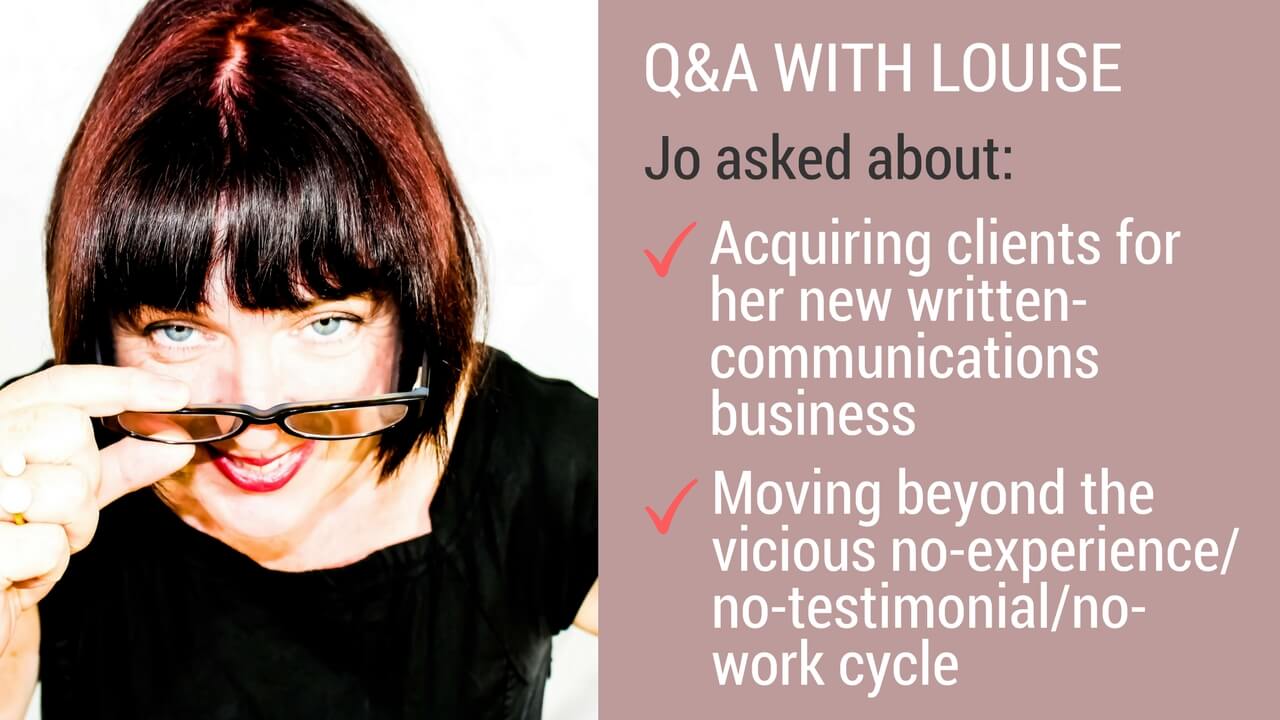
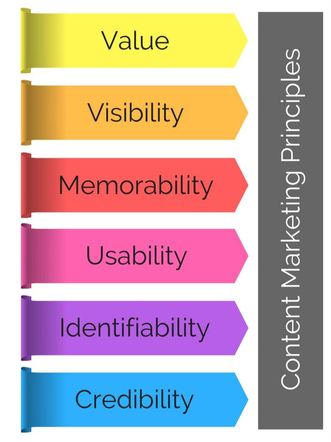
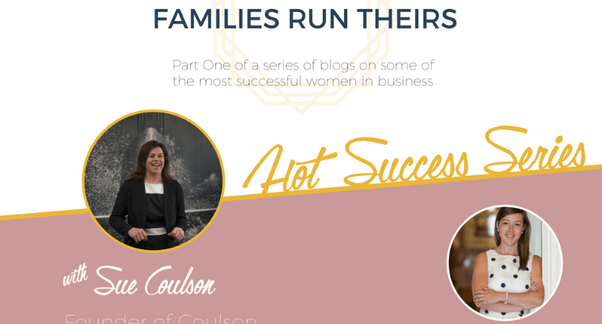
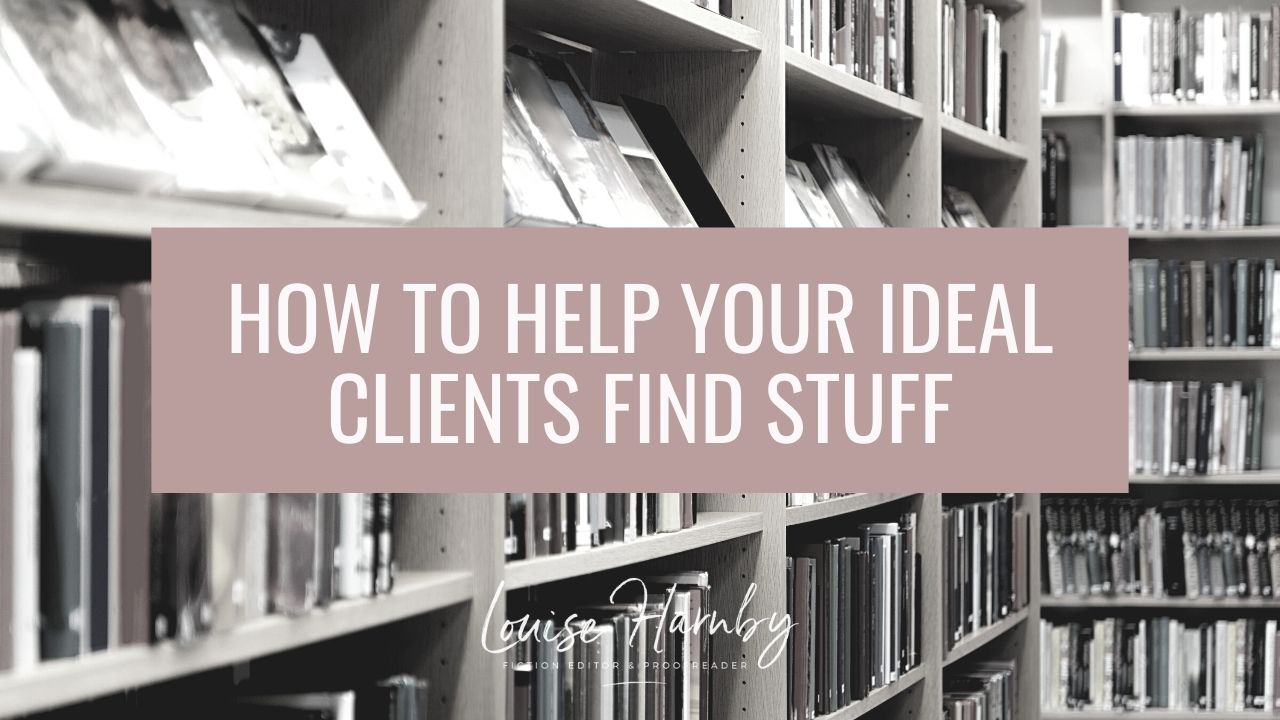
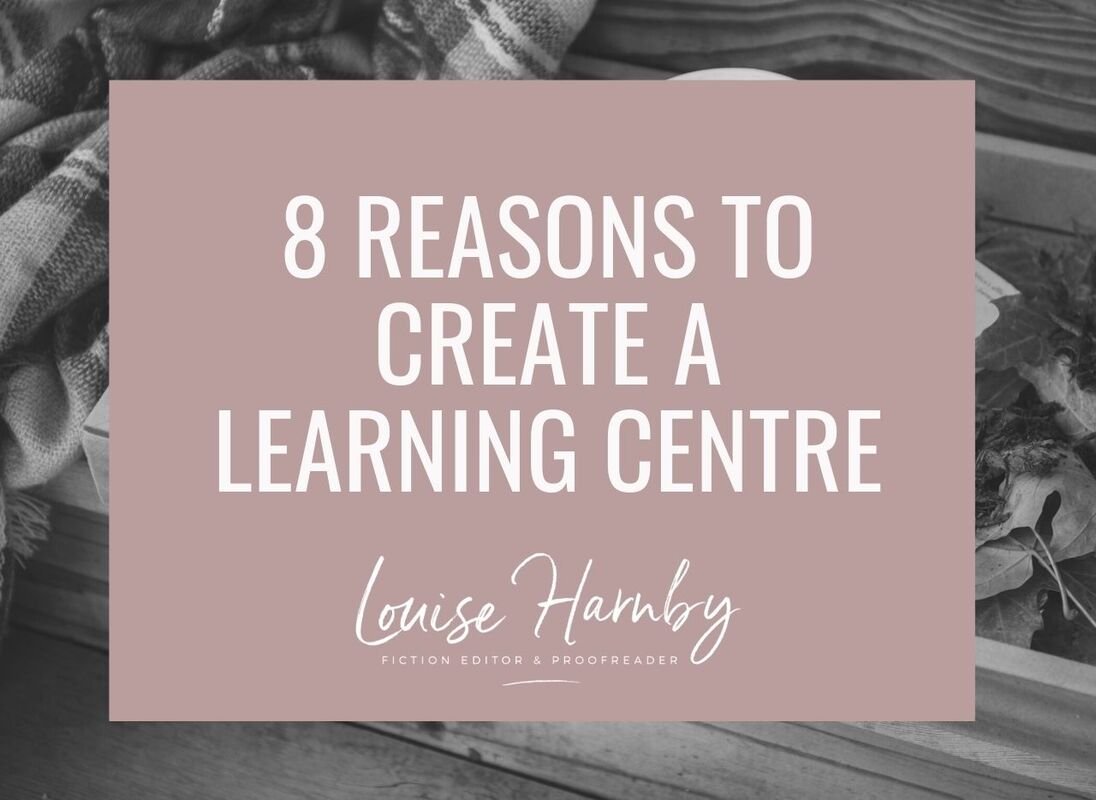
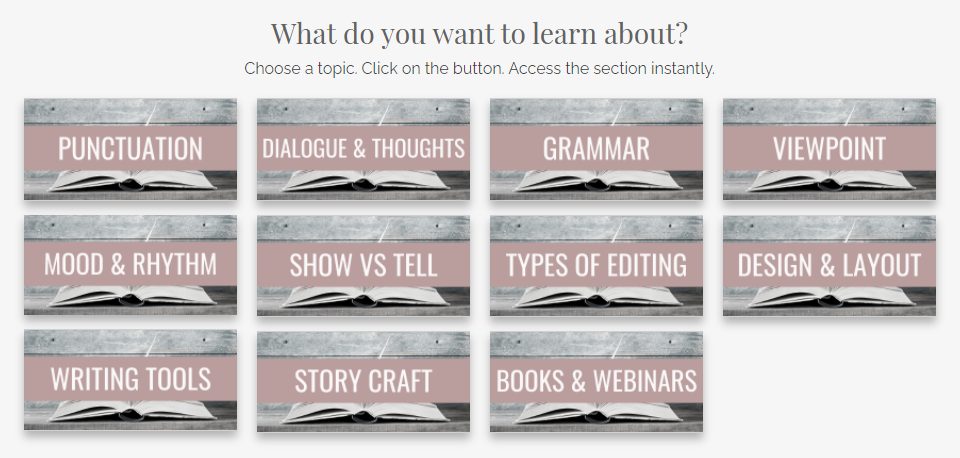
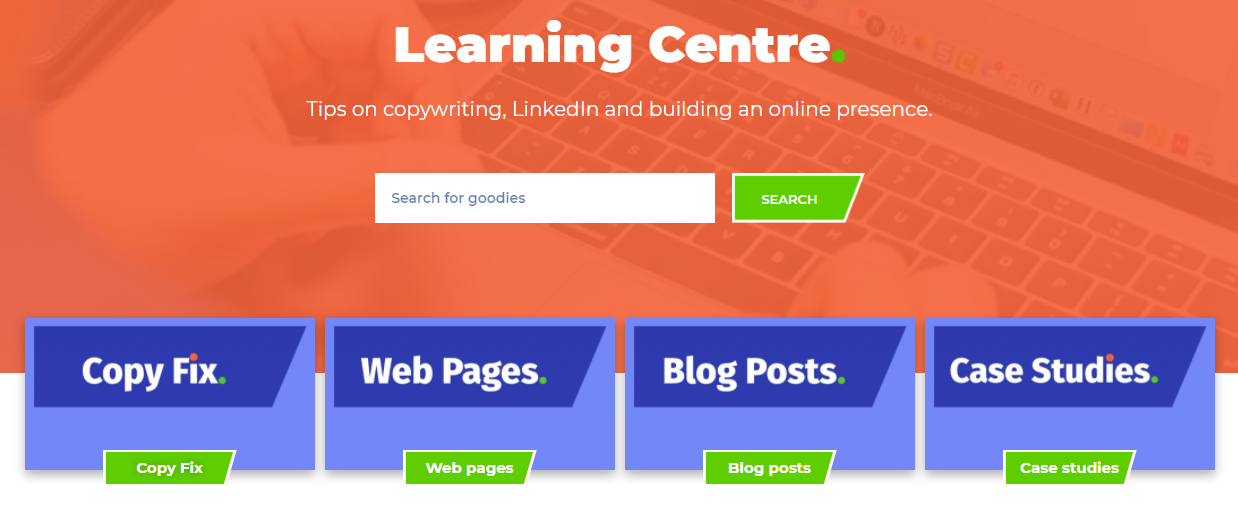
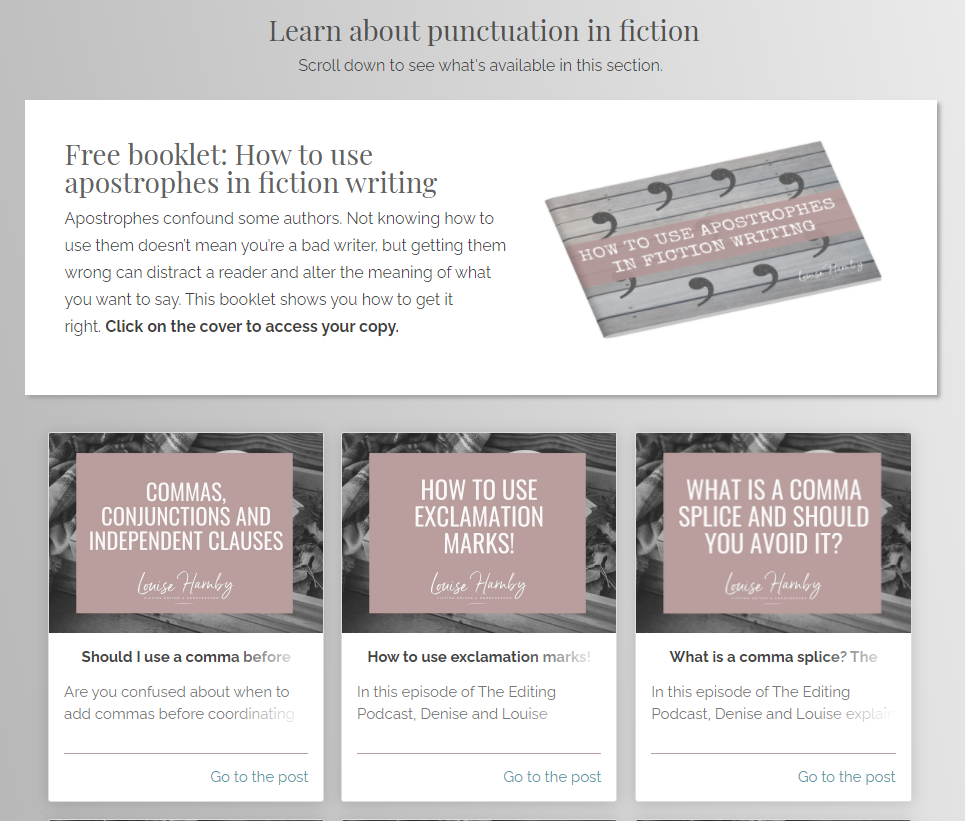
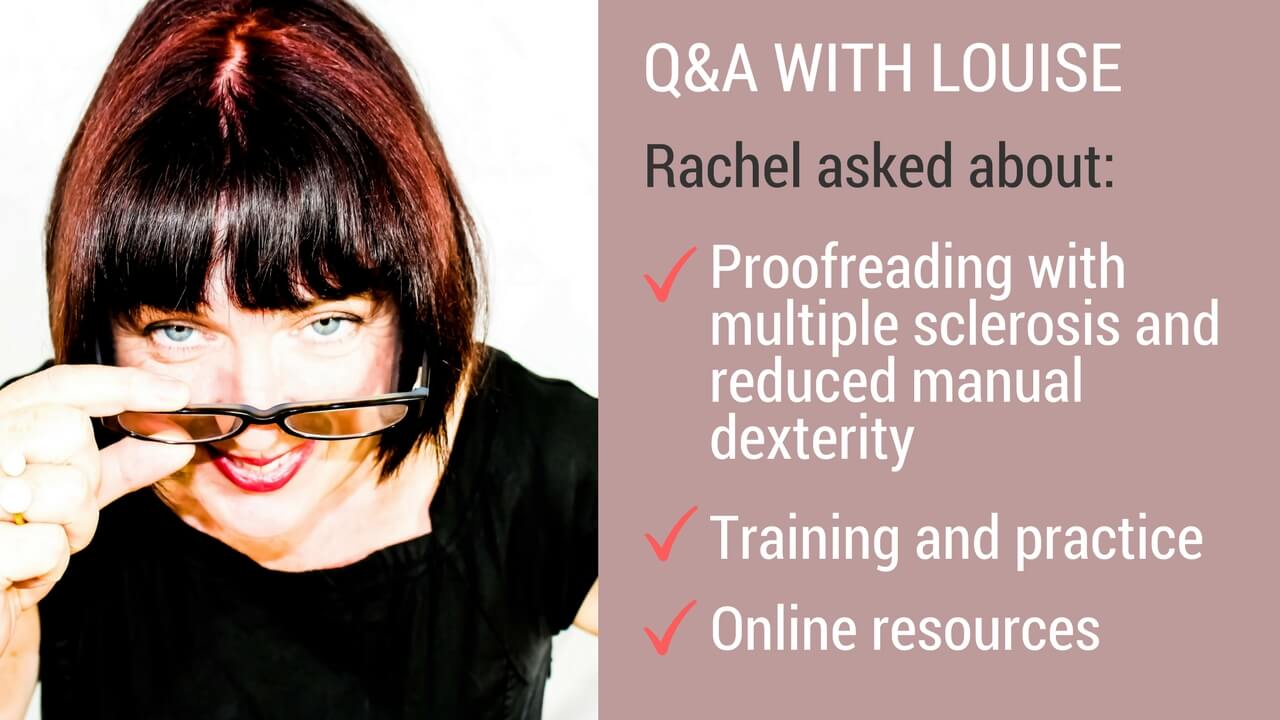
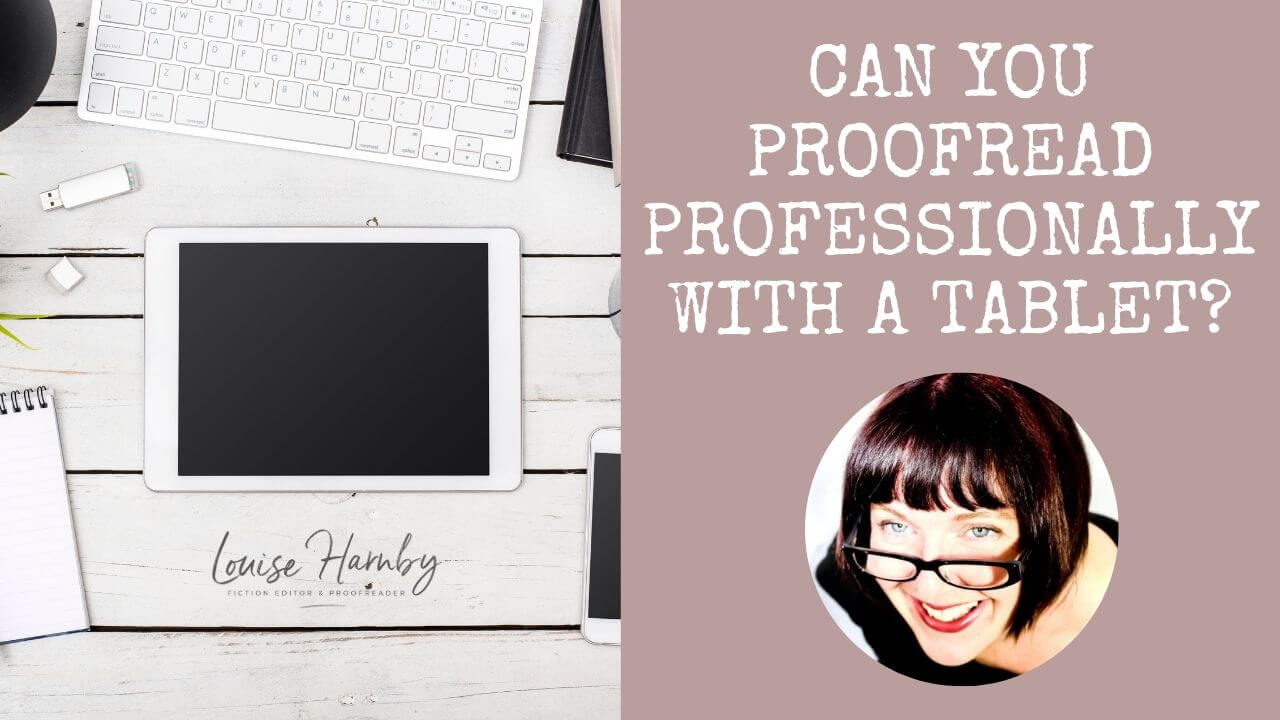
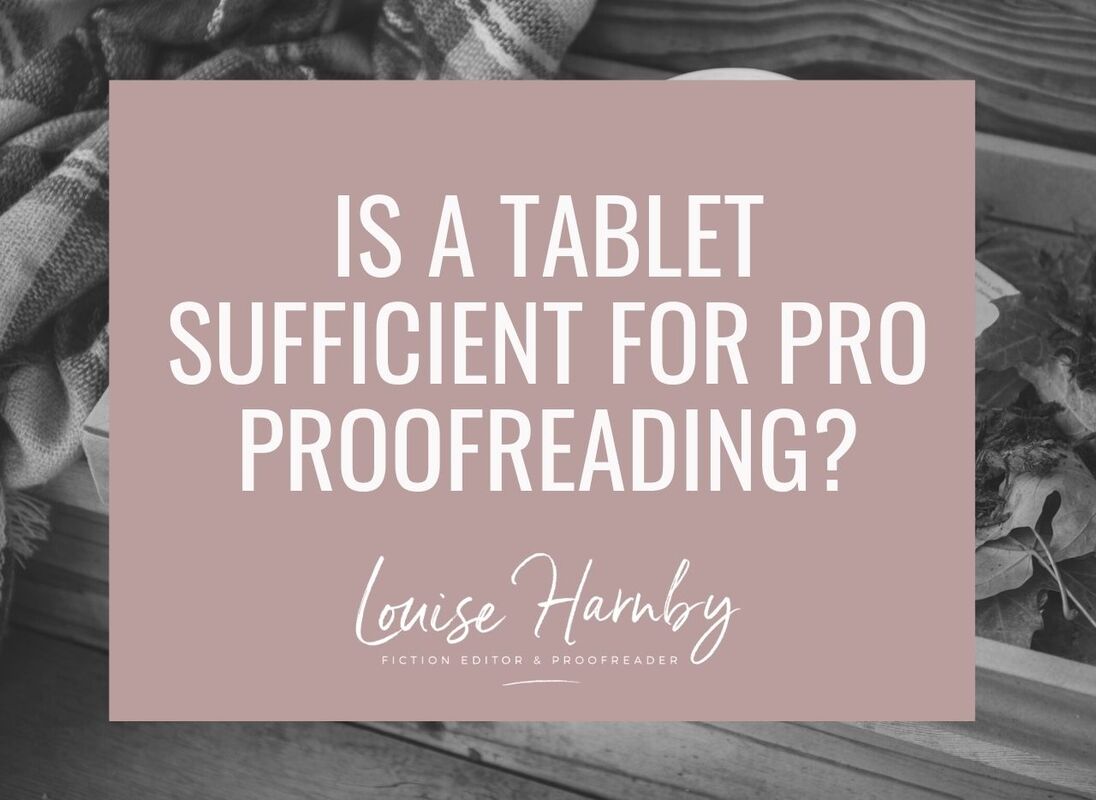
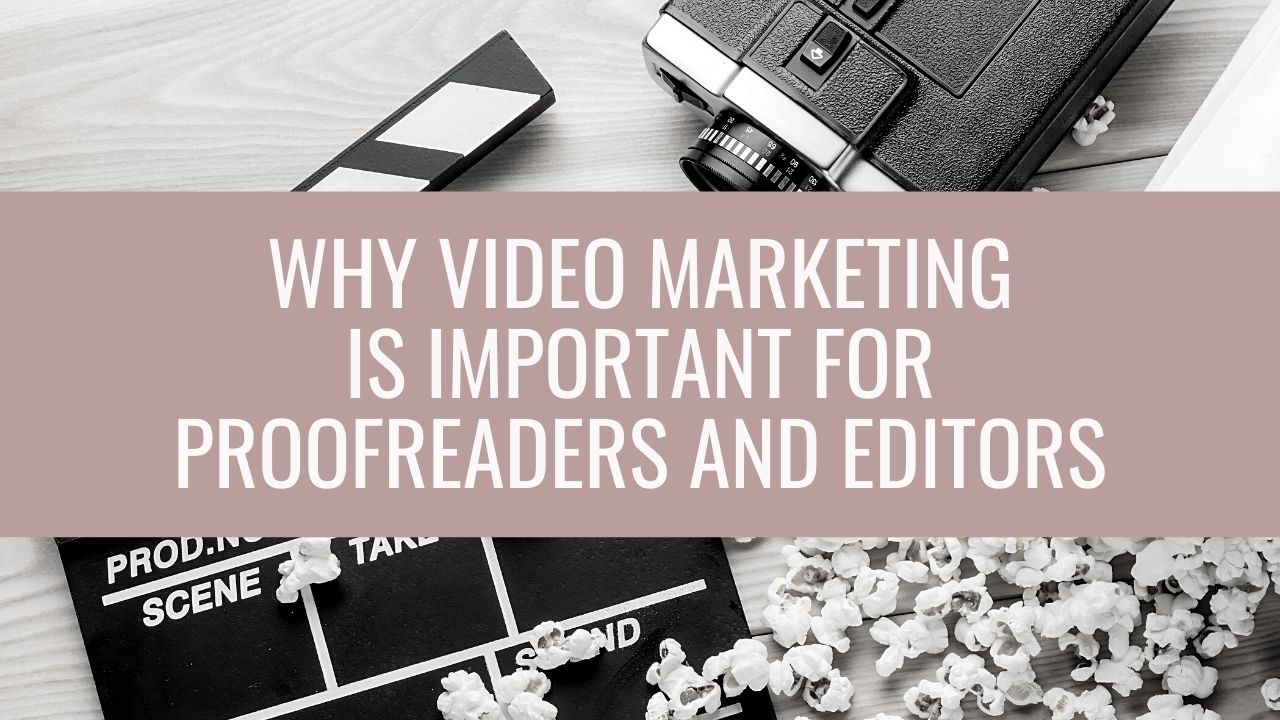
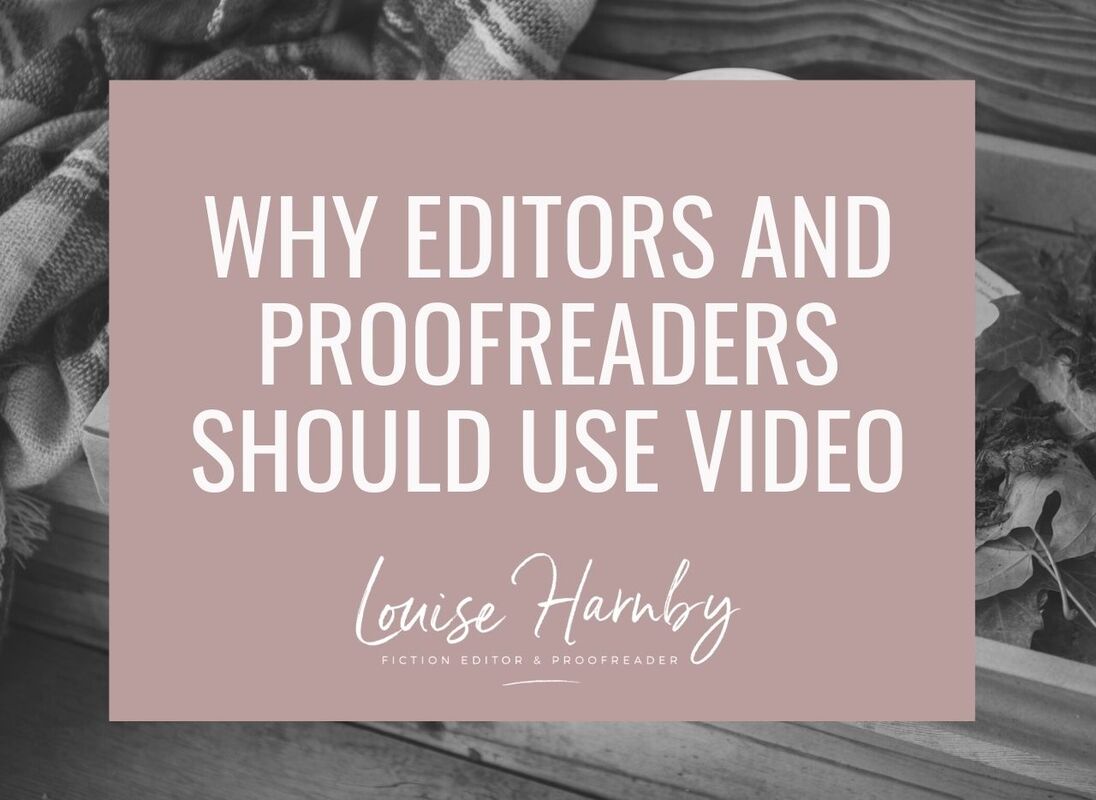
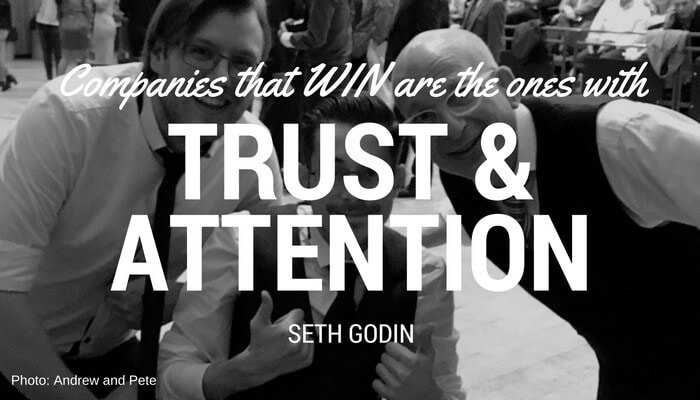



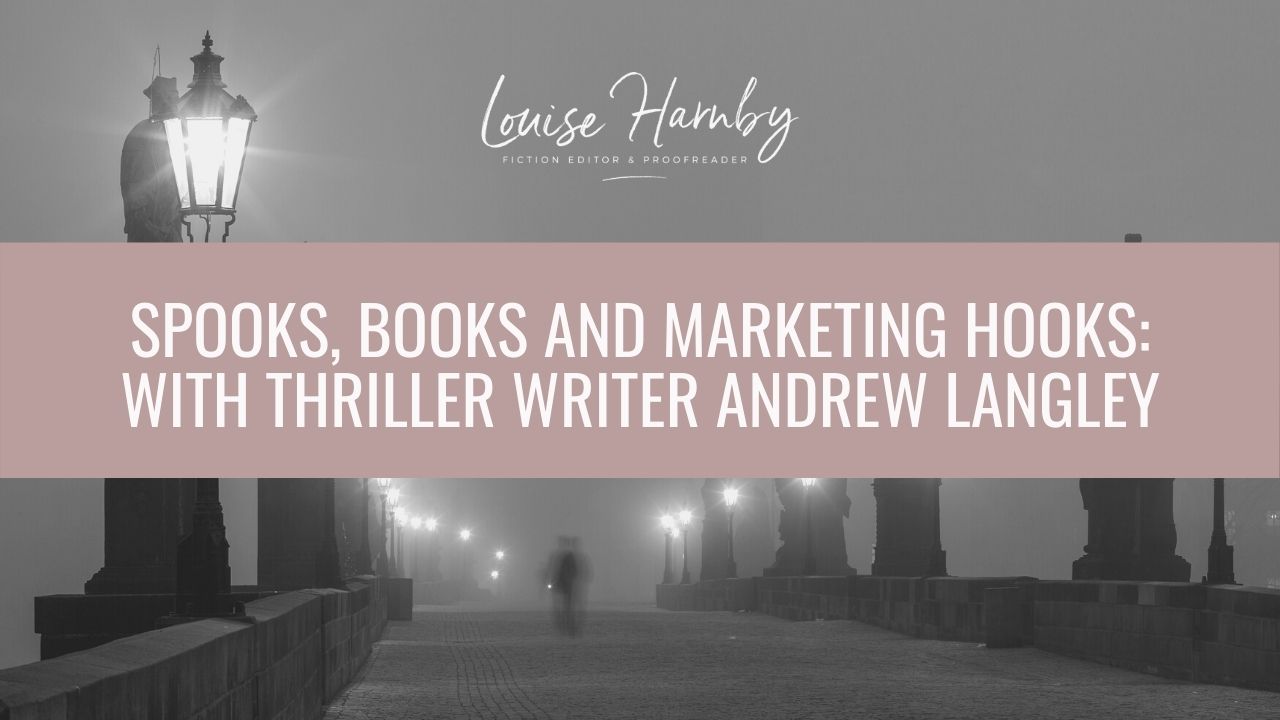
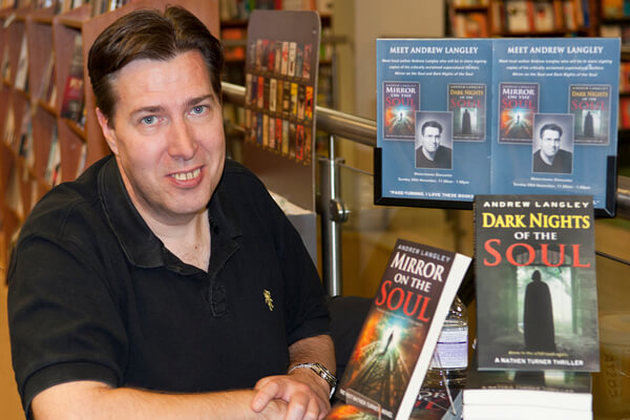
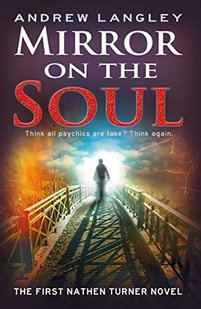
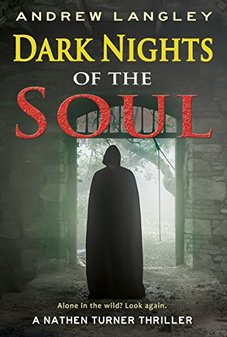
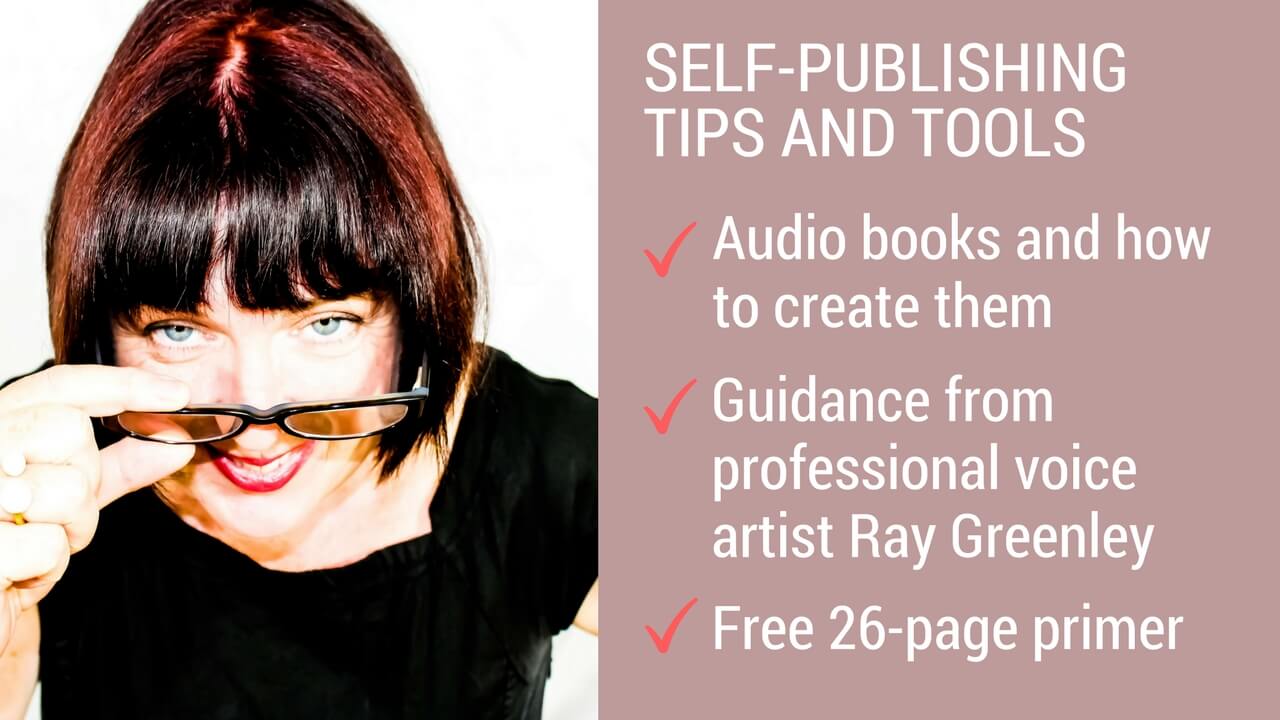

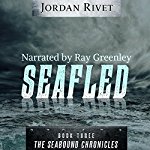
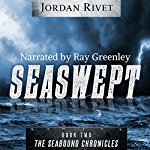
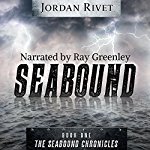
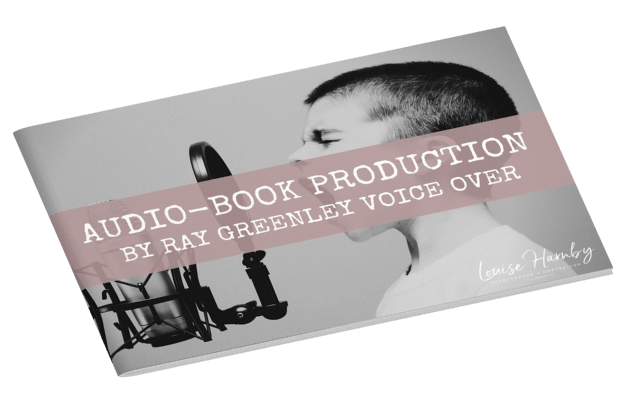
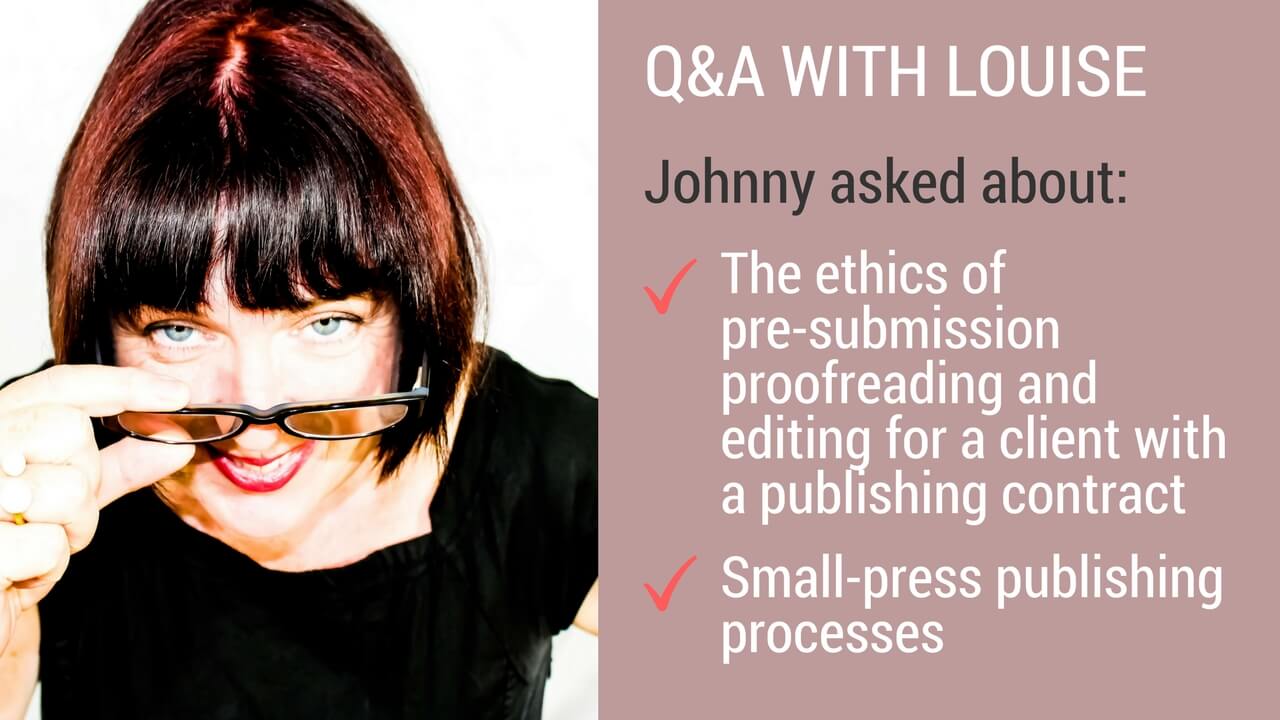
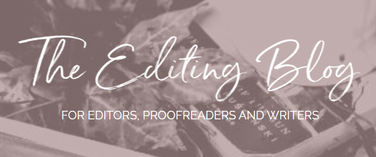

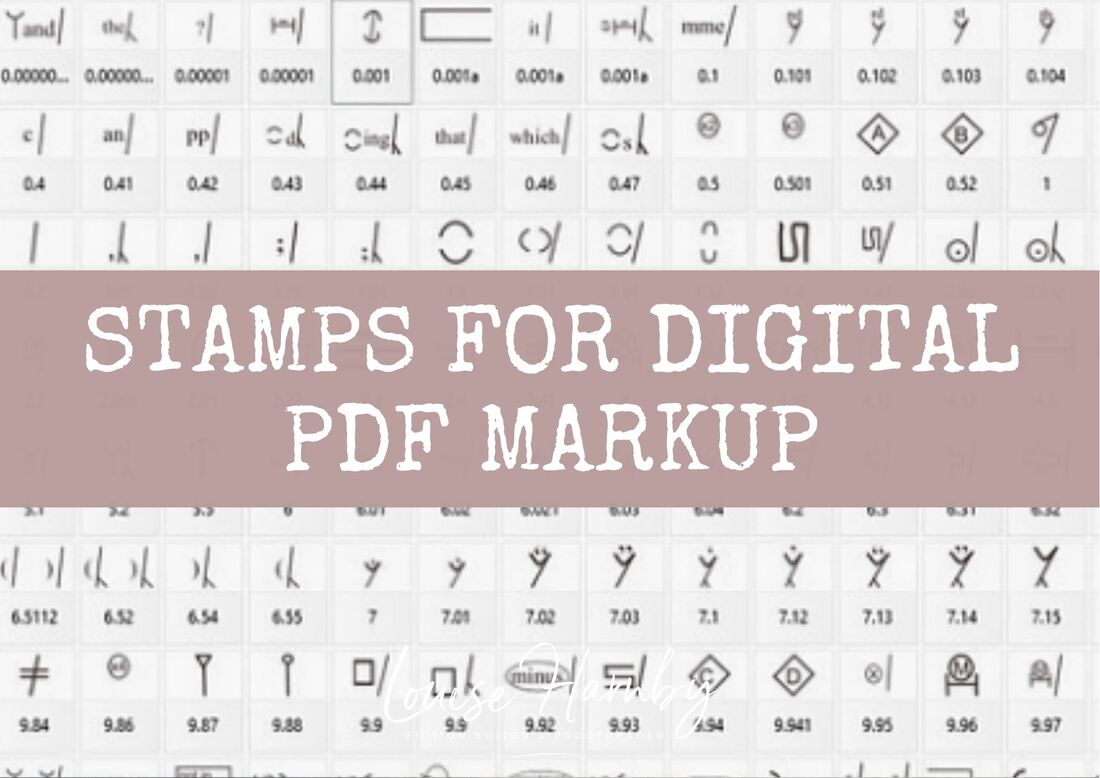
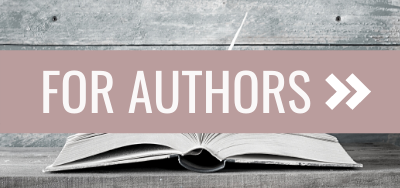
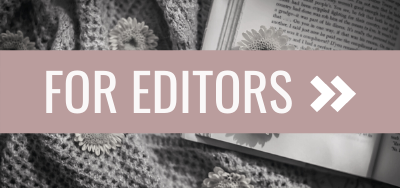
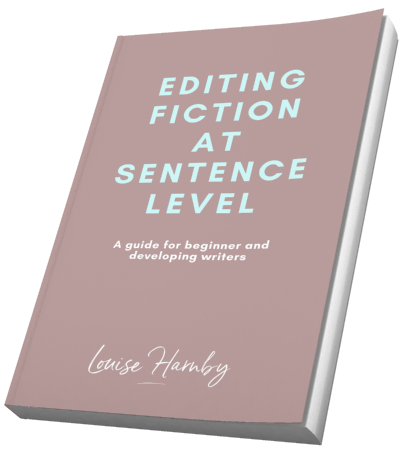
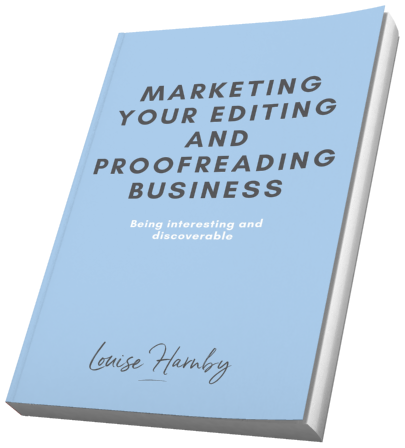
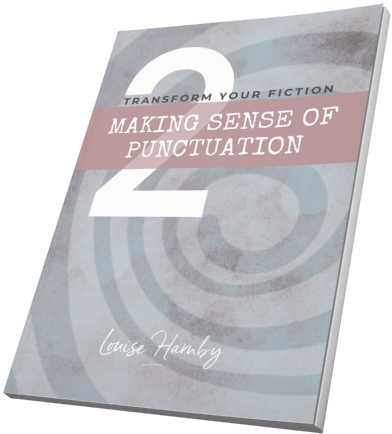
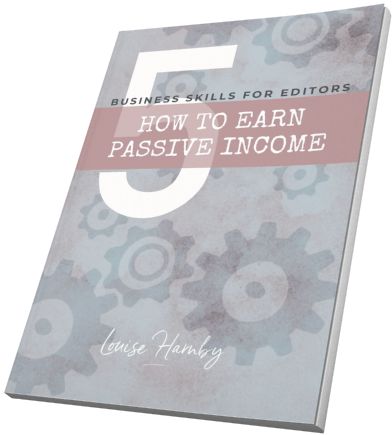
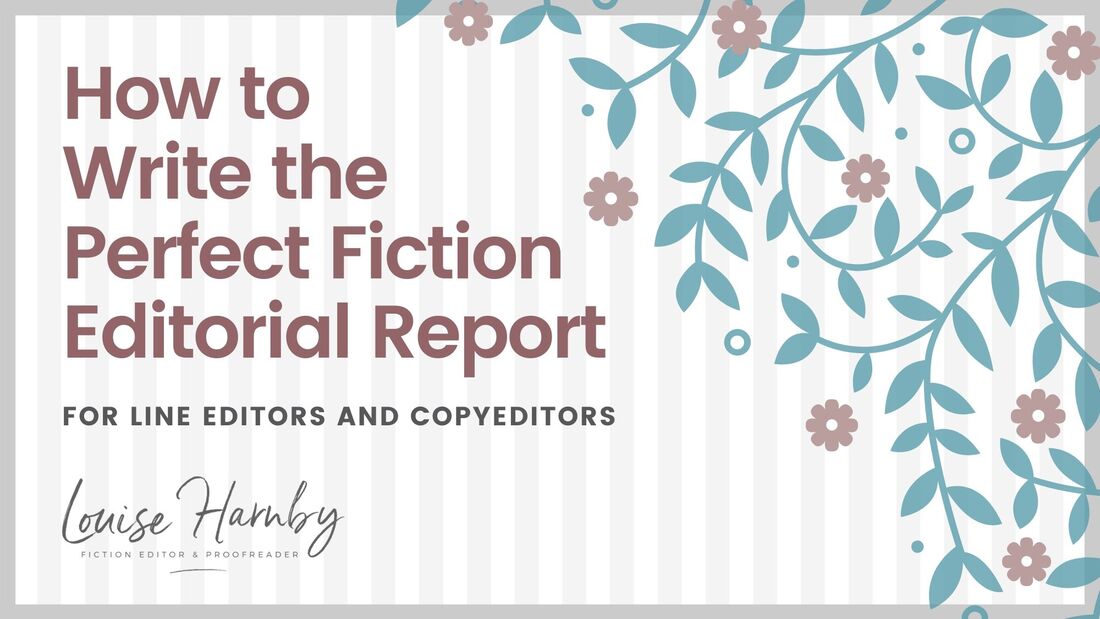
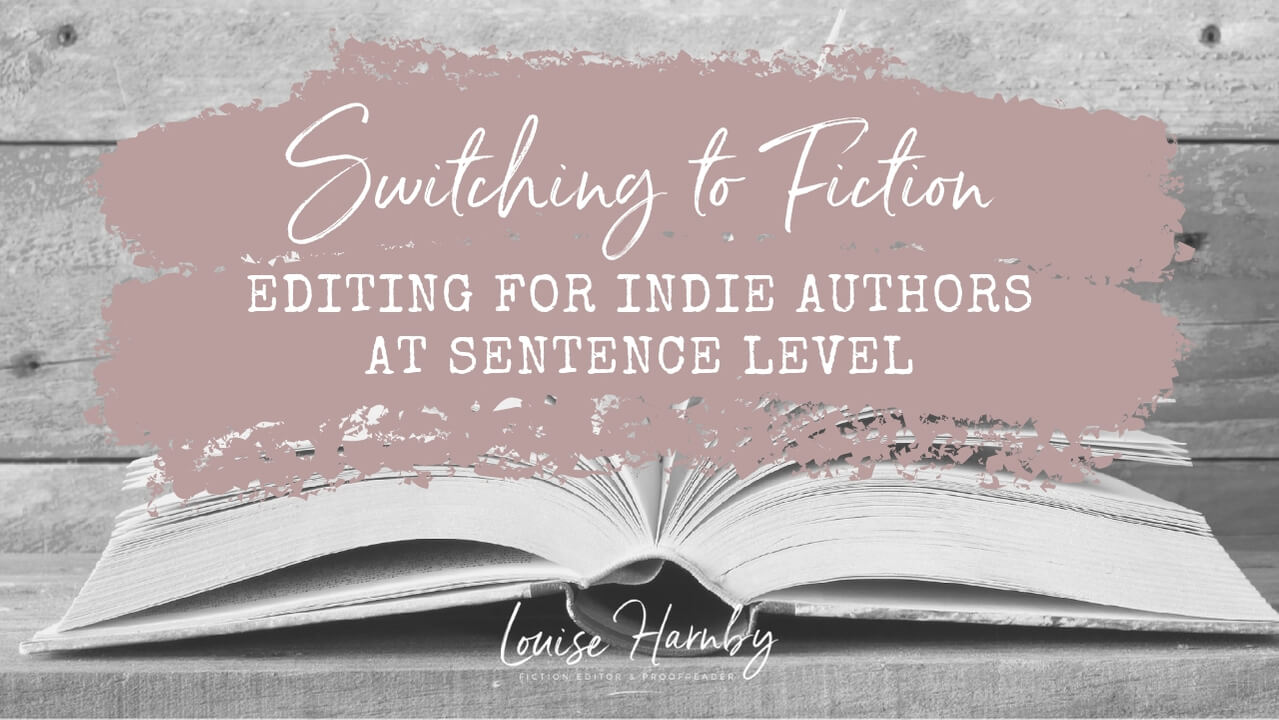
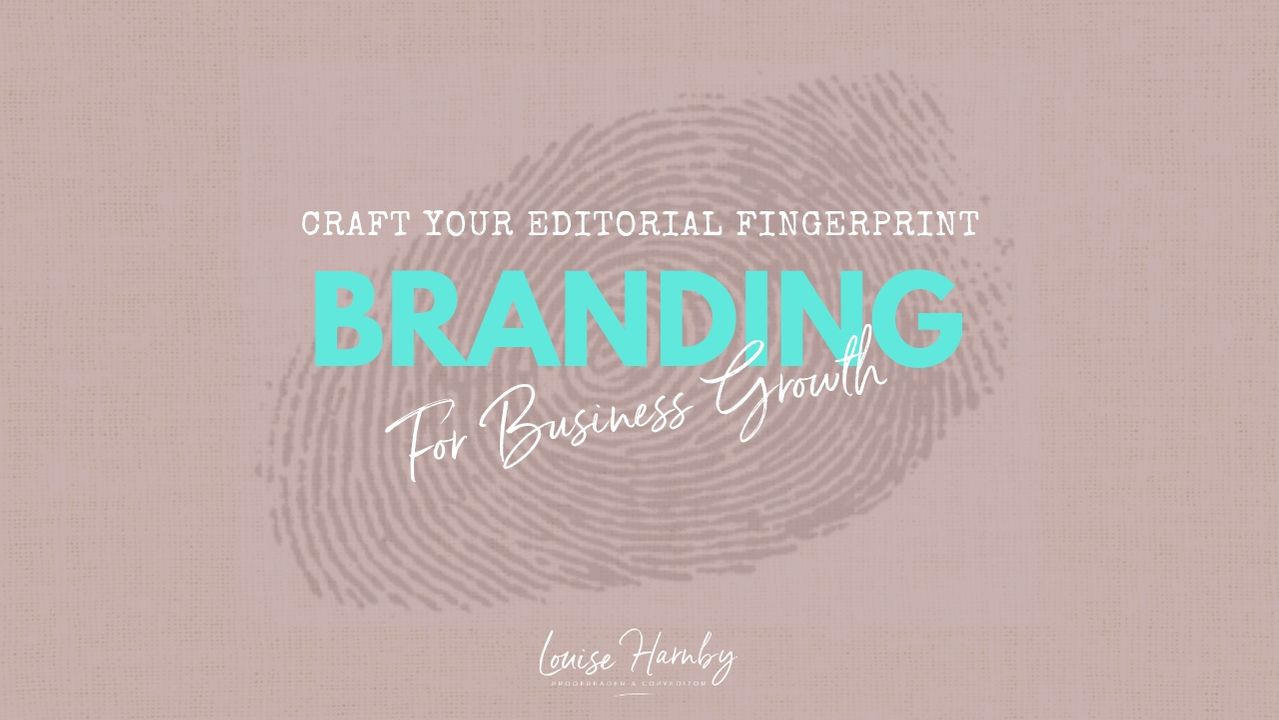
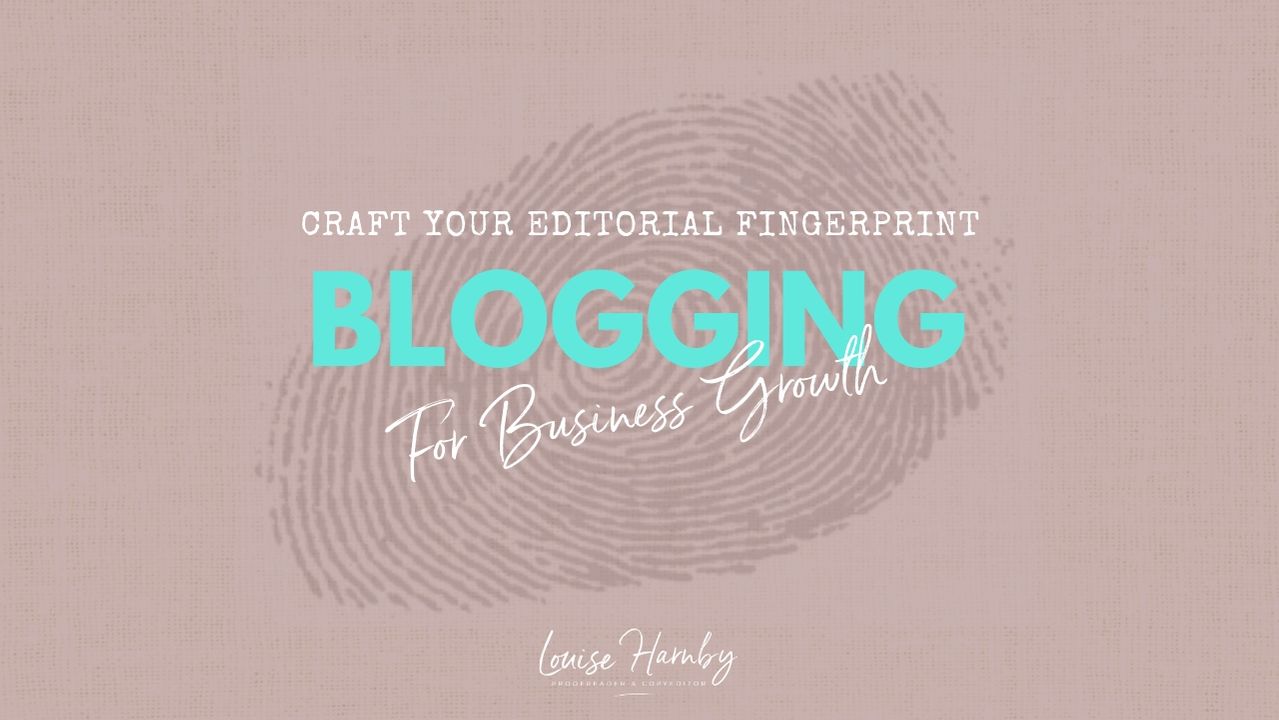
 RSS Feed
RSS Feed





